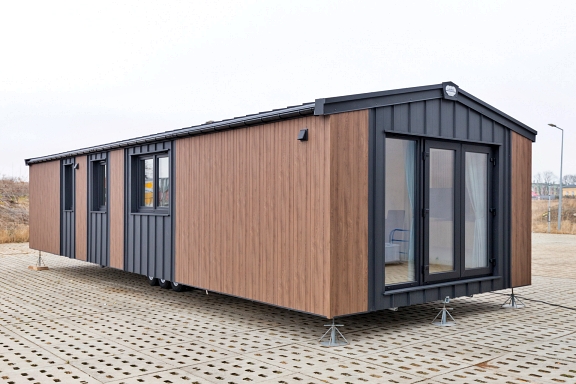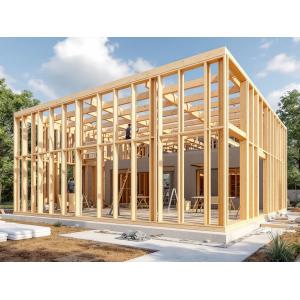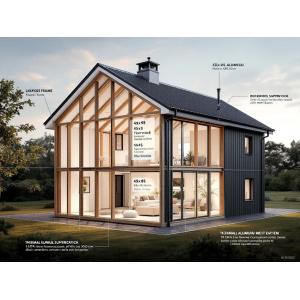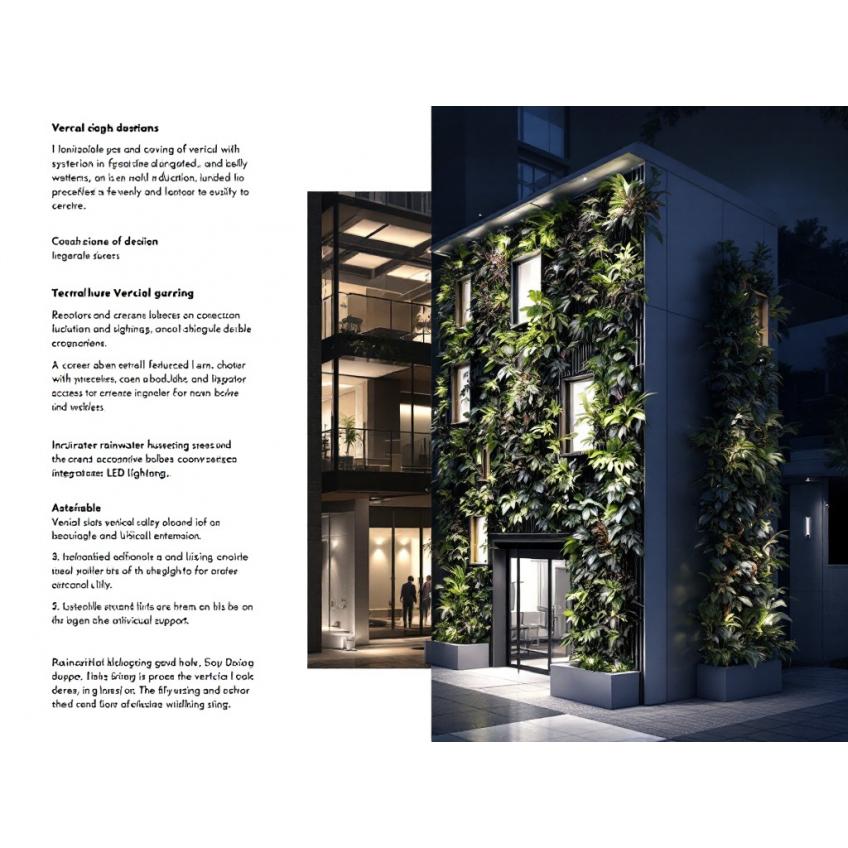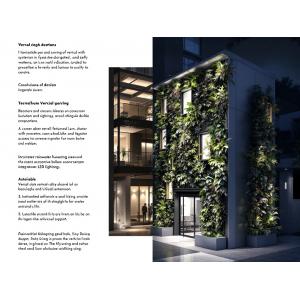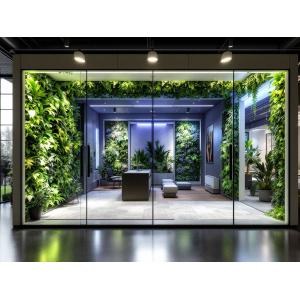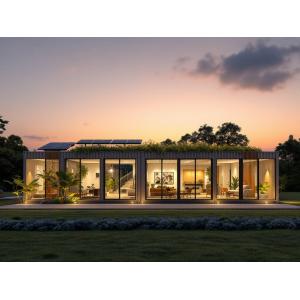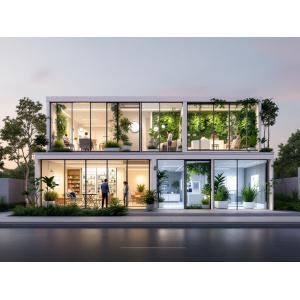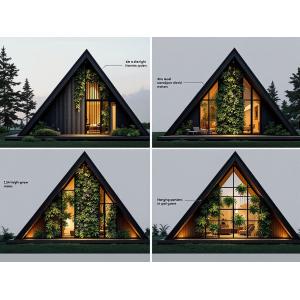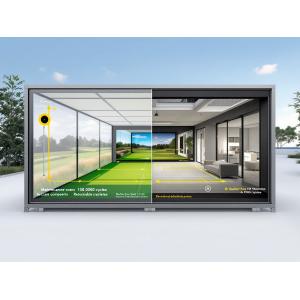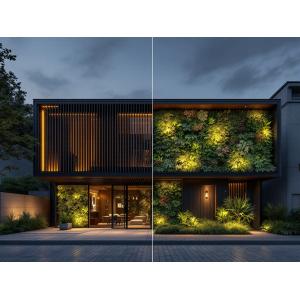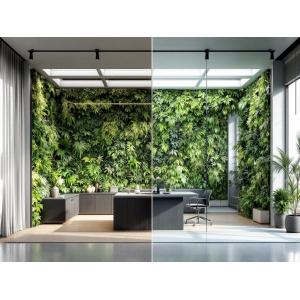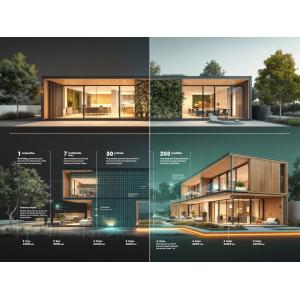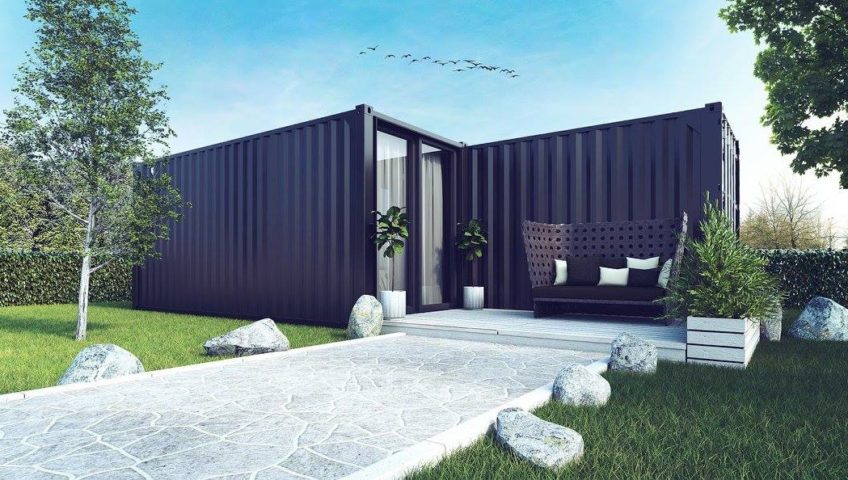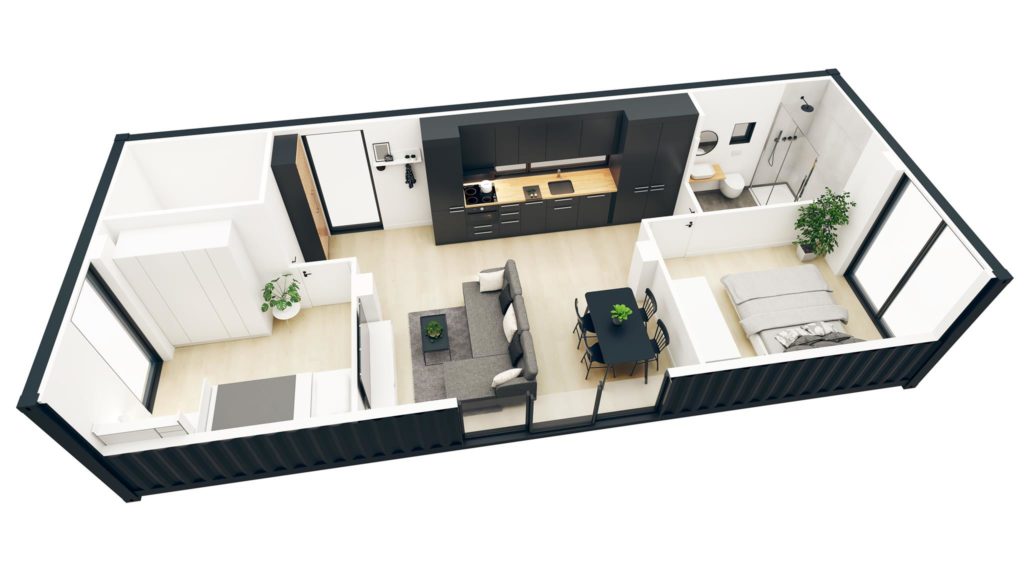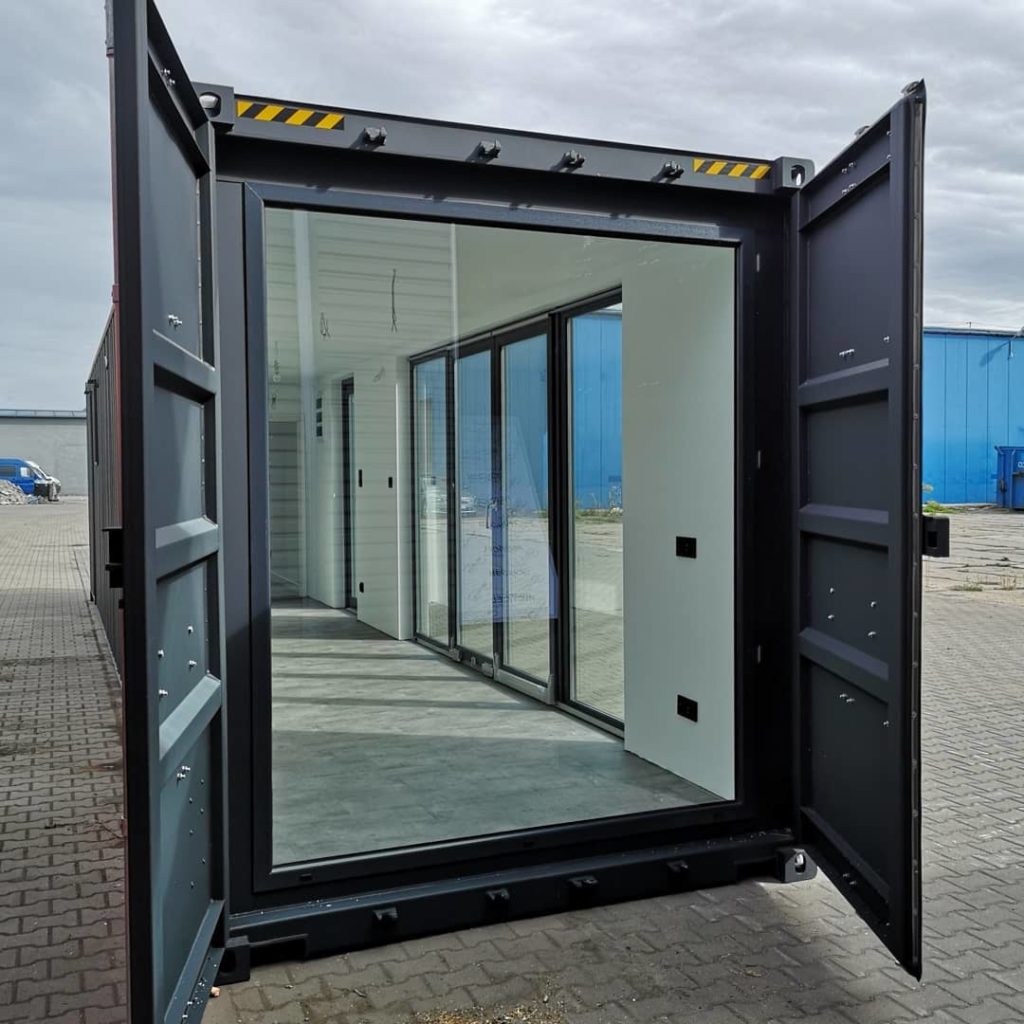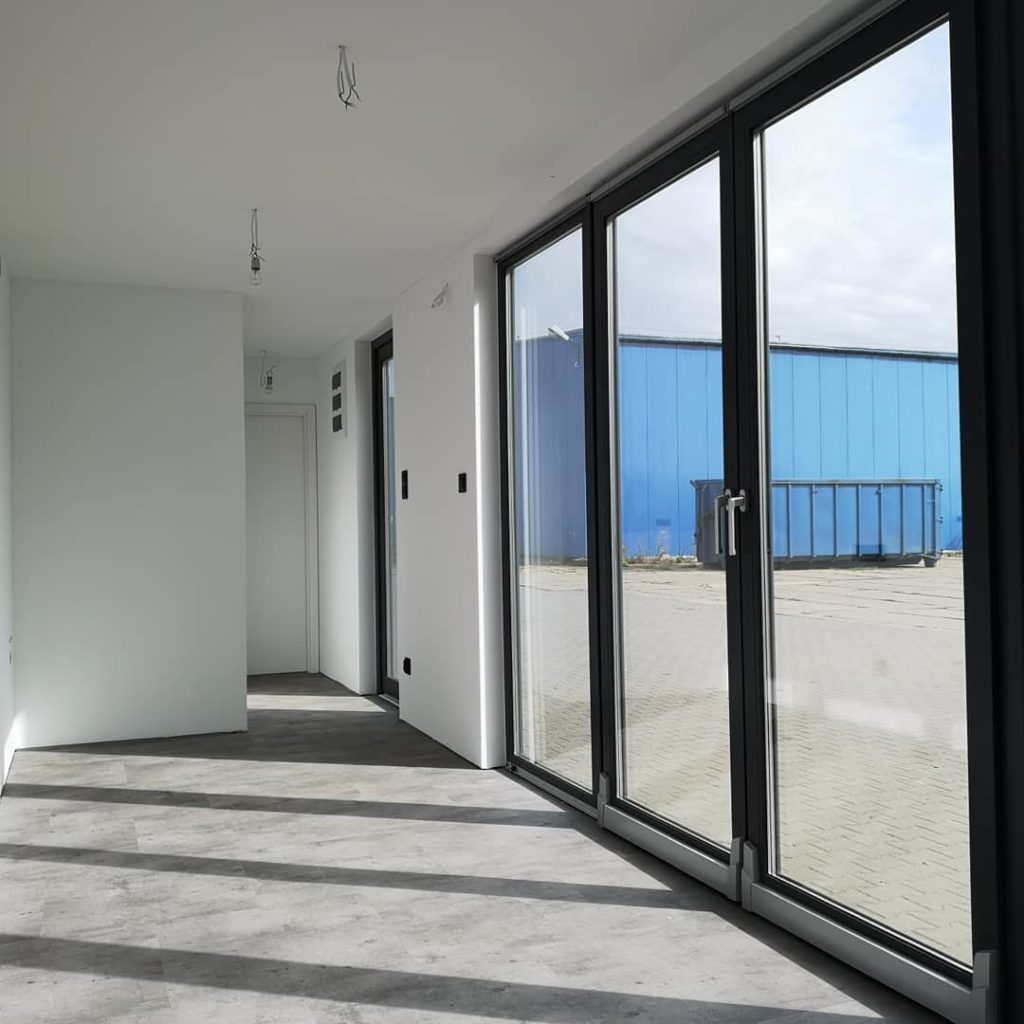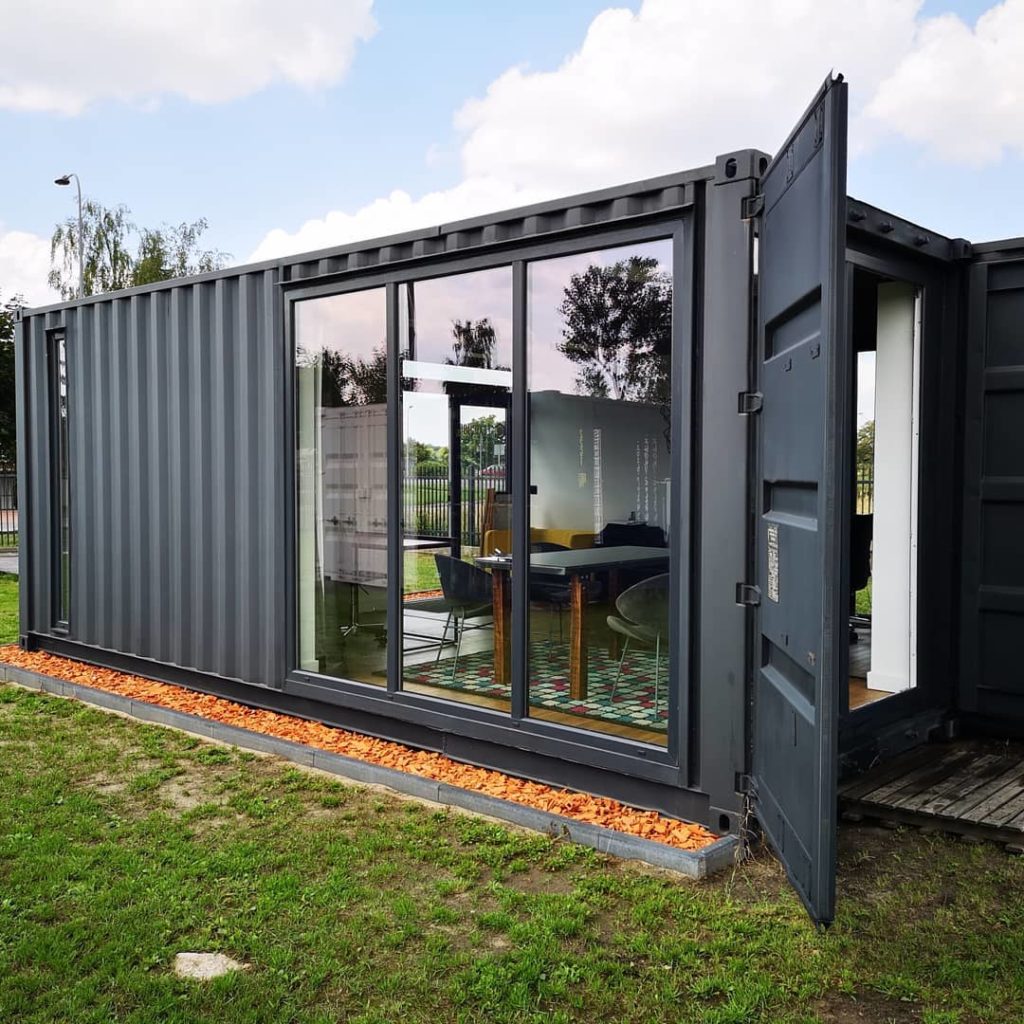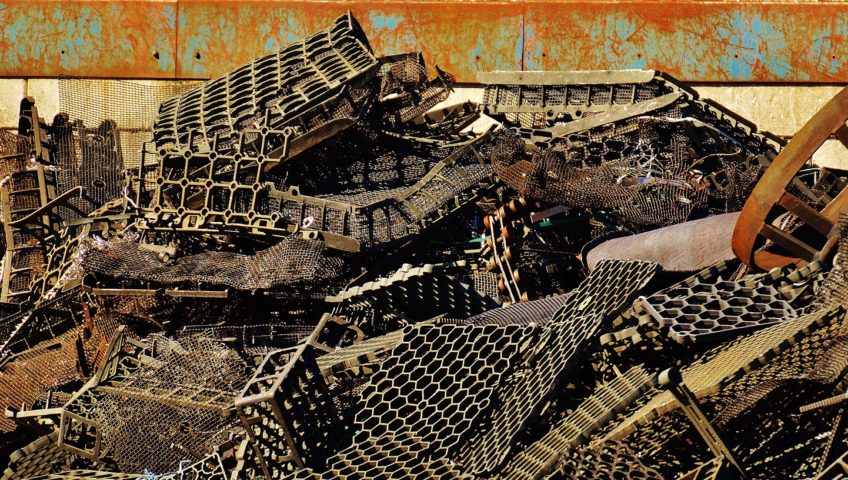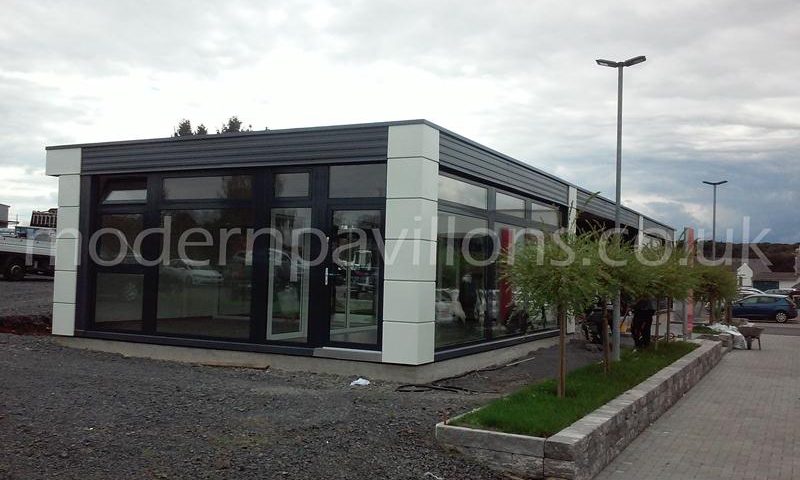Why Bespoke Modular Sales Suites Are Revolutionising Property Marketing
In today’s competitive property market, first impressions are everything. Whether you’re launching a new residential development, commercial park, or luxury housing estate, your sales suite sets the tone for potential buyers. Traditional brick-and-mortar sales offices take months to build and often become redundant once a development sells out. Bespoke modular sales suites offer a smarter solution: rapid deployment, exceptional quality, complete customisation, and the flexibility to relocate or repurpose after your project completes.
At KC Cabins Solutions Ltd, we specialise in manufacturing A-rated bespoke modular buildings that serve as stunning sales suites, show homes, and marketing centres. With ISO certifications, Part L 2021 compliance, and three distinct specification levels—Standard, A-Rated, and Hi-End with Personalized Interior Finish—we deliver sales environments that impress buyers and accelerate sales conversions.
What Makes Our Bespoke Modular Sales Suites Different?
Premium Quality That Matches Your Brand
Your sales suite represents your entire development. It must exude quality, professionalism, and attention to detail. Our bespoke modular buildings achieve this through:
✅ A-Rated Energy Performance: Part L 2021 compliant with 1.57 m³/(h.m²) air permeability
✅ Customizable Aesthetics: Steel elevation panels, RAL colour options, and premium cladding
✅ Superior Insulation: KINGSPAN QuadCore® panels with U-values from 0.11–0.18 W/m²K
✅ Flexible Layouts: Single-storey ground-level structures designed to your exact specifications
✅ Rapid Installation: 90% factory-built, installed in days rather than months
✅ Relocatable Design: Move to your next development or sell when the project completes
Three Specification Levels to Match Your Budget
We understand that different developments require different investment levels. That’s why we offer three distinct specification packages:
- Standard Specification – Cost-effective quality for budget-conscious projects
- A-Rated Specification – Premium energy performance and superior materials
- Hi-End with Personalized Interior Finish – Luxury bespoke interiors that wow high-end buyers
Each level maintains our commitment to structural integrity, compliance, and professional finish—the difference lies in insulation performance, material quality, and interior customisation.
A-Rated Specification: The Perfect Balance of Quality and Value
Our A-Rated specification represents the sweet spot for most property developers: exceptional energy performance, premium materials, and professional aesthetics at competitive pricing. This specification has become our most popular choice for sales suites across residential and commercial developments.
Outstanding Energy Performance
Part L 2021 Compliance with A-Rating:
- Energy Rating: “A” (exceeds minimum building regulations)
- Air Permeability: 1.57 m³/(h.m²) average—exceptional airtightness
- Year-Round Comfort: Minimal heating costs, comfortable in all seasons
This energy efficiency isn’t just about compliance—it demonstrates to potential buyers that your development prioritises sustainability and running costs, a key selling point in today’s market.
Structural Excellence
Steel Frame Construction:
- Closed profile steel with anti-corrosive protection
- Customizable RAL colour options to match your brand identity
- Single-storey, ground-level design for accessibility
- Engineered for 50+ year lifespan
The steel frame provides exceptional strength while allowing complete design flexibility. Whether you need an open-plan presentation space, private consultation rooms, or integrated kitchen facilities, our structural system adapts to your vision.
External Wall Insulation That Outperforms
KS1000/1150 TL Panels:
- U-value: 0.18 W/m²K (excellent thermal insulation)
- Fire Resistance: EN 13501-1 B-s2, d0; EN 13501-2 V: EW 45 (o↔i) ³ – 4m EI 30 (o↔i) – 7.5m
- Acoustic Insulation: 25 (-3; -5) dB
- Suitable for vertical or horizontal placement
- High fire resistance for safety compliance
These panels deliver 43% better thermal performance than UK minimum requirements, ensuring your sales suite remains comfortable regardless of weather while keeping energy bills minimal.
Internal Walls: KINGSPAN QuadCore® Quality
KS1150TL Panels (100mm thick):
- Double-sided white finish for clean, professional interiors
- Superior fire resistance and acoustic insulation
- Smooth surface ideal for branding, artwork, or feature walls
- Easy to maintain and clean
The acoustic properties are particularly valuable in sales suites, where private consultations with buyers require confidentiality and freedom from external noise distraction.
Roof System: Maximum Insulation
Single-Pitched Roof Design:
- KINGSPAN QuadCore® KS1150TL panels: 170mm thick
- U-value: 0.11 W/m²K (exceptional thermal performance)
- Protan SE 2.0 membrane: UV-resistant and flame retardant
- Fire resistance and acoustic insulation as per external walls
- Weather-tight protection for all seasons
The single-pitched design offers modern aesthetics while the 170mm insulation ensures minimal heat loss through the roof—where traditional buildings lose up to 25% of their heat.
Premium Flooring System
Multi-Layer Construction:
- Steel construction base with U-value: 0.11 W/m²K
- 18mm chipboard-cement board substrate
- Rigid Core Click Vinyl SPC (Stone Polymer Composite) finish
- 100% waterproof and suitable for wet areas
- Class 42 industrial-grade wear rating
- C-EIR finish for durability and aesthetics
This flooring system withstands heavy foot traffic from hundreds of potential buyers while maintaining a premium appearance. The waterproof properties protect against spills and weather tracked in from site visits.
Windows and Doors: First Impressions Count
Aluminum Entrance Doors:
- Customizable RAL colour to match brand identity
- U-value: 1.1 W/m²K
- Robust security features with Euro profile locks
- Professional appearance that welcomes buyers
UPVC Windows:
- U-value: 0.7 W/m²K (excellent thermal efficiency)
- Maximum natural light for bright, inviting interiors
- Low maintenance and weather-resistant
- Toughened glass for security
Fire-Resistant Internal Wooden Doors (FD30 rated):
- Suitable for creating private consultation areas
- Resistant to fire and smoke
- Increased acoustic insulation for confidential discussions
- Professional finish matching interior aesthetics
Kitchen Facilities for Client Hospitality
Integrated Kitchen Furniture:
- Soft-close mechanisms for quality feel
- Integrated handles for sleek, modern appearance
- Customizable colours for bodies, fronts, and countertops
- Space for coffee facilities, refreshments, and client hospitality
A well-appointed kitchen area allows your sales team to offer refreshments, creating a welcoming environment that encourages buyers to linger and engage with your development materials.
Sanitary Facilities: GEBERIT Quality
Premium Bathroom Specification:
- GEBERIT ceramics with 25-year warranty
- Wall-hung toilets with concealed cisterns
- Standard under-sink cabinets
- Vandal-resistant fixtures for public facilities
- Easy maintenance and hygiene compliance
Wall Finishes:
- Rocko Tiles waterproof panels: 2800x1230x4mm
- Vertical arrangement for modern aesthetics
- Customizable colour options
- Easy to clean and maintain
Professional sanitary facilities are essential for sales suites hosting dozens of visitors daily. GEBERIT’s reputation for quality reassures buyers about the standards they can expect in the development itself.
Energy-Efficient Heating System
Fujitsu Air-to-Air Heat Pump:
- SCOP 4.5 efficiency rating (Seasonal Coefficient of Performance)
- Heating and cooling capability for year-round comfort
- Minimal running costs (typically £40–£60 monthly)
- Quiet operation for professional environment
- Zone control for different areas
This advanced heating system ensures your sales suite remains comfortable in all seasons while demonstrating the energy-efficient technologies buyers increasingly expect in modern developments.
External Cladding: Steel Elevation Panels
Premium Steel Panels:
- Hidden lock system for seamless appearance
- Standard flashings included
- Hot-dip zinc-coated steel with galvanic protection
- Long lifespan with minimal maintenance
- Customizable finish options
The external appearance of your sales suite creates the first impression of your entire development. Our steel elevation panels offer durability, modern aesthetics, and the flexibility to match your architectural vision.
Standard Specification: Cost-Effective Quality
For developers working with tighter budgets or shorter sales periods, our Standard Specification delivers professional quality at competitive pricing. While insulation values and material grades differ from the A-Rated option, structural integrity, compliance, and professional finish remain uncompromised.
Key Features of Standard Specification:
✅ Steel frame construction with anti-corrosive protection
✅ Compliant insulation meeting minimum building regulations
✅ UPVC windows and aluminum doors
✅ Professional flooring and internal finishes
✅ Basic kitchen and sanitary facilities
✅ Electric heating system
✅ Customizable layout and external colours
Ideal For:
- Short-term sales periods (6–12 months)
- Budget-conscious developments
- Temporary site offices converting to sales use
- Developments in mild climates with lower heating demands
Pricing: From £600/m² (depending on size and customisation)
Hi-End with Personalized Interior Finish: Luxury Sales Suites
For premium developments—luxury housing estates, high-end commercial parks, or exclusive residential communities—your sales suite must reflect the exceptional quality buyers expect. Our Hi-End specification delivers bespoke interiors that create an unforgettable impression.
Elevated Materials and Finishes
Premium Interior Options:
- Designer flooring: Engineered wood, luxury vinyl, or natural stone
- Feature walls: Timber cladding, textured panels, or custom artwork
- Bespoke lighting: LED feature lighting, chandeliers, or architectural fixtures
- High-end kitchen: Premium appliances, stone countertops, designer cabinetry
- Luxury bathrooms: Designer ceramics, rainfall showers, ambient lighting
Complete Brand Integration
Your sales suite becomes an extension of your development’s brand identity:
🎨 Custom Colour Schemes: Interior design matching your development’s palette
🎨 Branded Elements: Logo integration, feature walls, custom signage
🎨 Furniture Packages: Designer furniture creating aspirational lifestyle imagery
🎨 Technology Integration: Interactive displays, virtual reality zones, smart home demonstrations
🎨 Landscaping: External areas with planting, pathways, and outdoor furniture
Personalized Layout Design
Unlike standard specifications, the Hi-End option includes comprehensive interior design services:
- Reception Area: Professional welcome space with branding
- Presentation Zone: Large display areas for development plans, CGIs, and materials
- Private Consultation Rooms: Soundproofed spaces for financial discussions
- Show Home Integration: Sample room sets demonstrating interior options
- Technology Hub: Interactive screens, VR headsets, configurator tools
- Client Lounge: Comfortable seating with refreshment facilities
Why Hi-End Specification Accelerates Sales
Psychology of Premium Environments:
Research shows that buyers form opinions about property quality within 7 seconds of entering a space. A luxury sales suite creates:
- Positive First Impressions: Quality environment = quality development
- Emotional Connection: Aspirational spaces trigger buying desire
- Perceived Value: Premium surroundings justify premium pricing
- Extended Dwell Time: Comfortable environments encourage longer visits
- Word-of-Mouth Marketing: Impressive sales suites become talking points
ROI on Hi-End Investment:
For a £50 million development with 100 units:
- Additional Investment: £50,000–£100,000 for Hi-End vs Standard specification
- Sales Velocity Increase: 15–25% faster sales (industry data)
- Price Premium: Buyers justify 2–5% higher prices when impressed
- Reduced Holding Costs: Faster sales reduce financing costs by £200,000+
Net Result: The Hi-End specification pays for itself many times over through accelerated sales and enhanced pricing.
Pricing: From £1,850/m² (fully customized interior fit-out included)
Bespoke Design Process: From Concept to Completion
Step 1: Initial Consultation
Our sales team, led by Rafal Cierocki (Sales Director), begins with a comprehensive consultation:
We Discuss:
- Development type, size, and target market
- Sales suite requirements (size, layout, facilities)
- Timeline and budget parameters
- Brand identity and aesthetic preferences
- Site conditions and access
Step 2: Bespoke Design Development
Our design team creates custom drawings including:
- Floor Plans: Optimized layouts for sales functionality
- Elevations: External appearance matching your vision
- 3D Visualizations: Photorealistic renders of the finished suite
- Material Specifications: Detailed breakdown of all components
- Compliance Documentation: Building regulations and certification
Typical Design Timeline: 2–3 weeks
Step 3: Specification Selection
Review and select from our three specification levels:
Step 4: Manufacturing
90% Factory Completion:
- Controlled environment ensures consistent quality
- Weather-independent production schedule
- Rigorous quality checks at each stage
- ISO 9001 certified manufacturing process
Manufacturing Timeline: 4–8 weeks (depending on size and complexity)
Step 5: Delivery and Installation
Rapid On-Site Assembly:
- Pre-built modules delivered to site
- Crane installation in 1–3 days
- Utilities connection and commissioning
- Final snagging and handover
Total Project Timeline: 6–12 weeks from order to occupancy (compared to 6–9 months for traditional construction)
Real-World Applications: Sales Suite Case Studies
Case Study 1: Luxury Residential Development, Surrey
Project: 75-unit executive housing estate, £35 million development value
Challenge: Planning required sales suite operational before first homes completed. Traditional build would take 9 months—too long for marketing schedule.
Solution: Hi-End specification modular sales suite (120m²):
- Open-plan presentation area with development CGIs
- Two private consultation rooms
- Premium kitchen with coffee bar
- Designer bathroom with luxury finishes
- External timber cladding matching house designs
- Landscaped approach with parking
Results:
- Delivered and installed in 8 weeks
- 40% of units sold within first 3 months
- Buyers specifically mentioned sales suite quality in feedback
- Suite relocated to developer’s next project after sell-out, saving £150,000 on new build
- ROI: 650% return on sales suite investment through accelerated sales velocity
Developer Testimonial: “The modular sales suite exceeded our expectations. Buyers walked in and immediately understood the quality standards we were delivering. The speed of installation meant we started marketing 7 months earlier than planned, which translated directly into earlier cash flow and reduced financing costs.”
Case Study 2: Commercial Business Park, Manchester
Project: 12-unit commercial development for SME businesses, £8 million value
Challenge: Needed professional sales environment to attract corporate tenants, but budget constraints limited traditional construction options.
Solution: A-Rated specification modular sales suite (80m²):
- Reception area with branded feature wall
- Presentation zone with interactive floor plans
- Private meeting room for lease negotiations
- Kitchen facilities for client hospitality
- GEBERIT bathroom facilities
- Steel elevation panels in corporate grey (RAL 7016)
Results:
- Installed in 5 days with minimal site disruption
- 8 of 12 units pre-let before construction completion
- Energy bills averaged £45/month despite year-round operation
- Suite converted to site office during construction phase
- Total Cost: £72,000 (vs £180,000 quoted for traditional build)
Developer Feedback: “The A-rated specification delivered exactly what we needed—professional appearance, comfortable environment, and minimal running costs. The ability to repurpose it as a site office added unexpected value.”
Case Study 3: Retirement Village, Devon
Project: 45-unit retirement community with care facilities, £22 million development
Challenge: Target demographic (60–80 years old) required accessible, comfortable viewing environment. Extended sales period (18–24 months) needed durable, low-maintenance solution.
Solution: Hi-End specification modular sales suite (150m²):
- Wheelchair-accessible entrance and facilities (Part M compliant)
- Comfortable lounge area with premium furniture
- Show apartment demonstrating accessibility features
- Kitchen with tea/coffee facilities and seating
- Two accessible bathrooms with demonstration aids
- Underfloor heating for comfort
- External landscaping with accessible pathways
Results:
- Created welcoming environment for elderly buyers
- 60% of units sold within 12 months (exceeding projections)
- Suite used for community events during construction, building relationships
- Converted to community centre after completion, adding ongoing value
- Sales Acceleration: 8 months faster than comparable developments
Sales Director Comment: “Our buyers spent hours in the sales suite, which was exactly what we wanted. The comfortable, accessible environment made them feel at home immediately. Many said the quality of the sales suite convinced them of our commitment to their needs.”
Case Study 4: Mixed-Use Development, Bristol
Project: 30 residential apartments + 6 commercial units, £18 million value
Challenge: Dual-purpose sales suite needed to appeal to both residential buyers and commercial tenants. Limited site space required compact but impressive solution.
Solution: A-Rated specification modular sales suite (95m²) with flexible layout:
- Convertible presentation area with movable partitions
- Residential display zone with interior finishes
- Commercial specification samples and floor plans
- Dual-branded reception area
- Professional meeting room
- Compact kitchen and bathroom
Results:
- Single suite effectively marketed both property types
- Residential sales: 85% sold within 10 months
- Commercial units: 100% pre-let before completion
- Flexible layout adapted as sales progressed
- Space Efficiency: 95m² suite replaced need for 150m² traditional build
Design Flexibility: Tailored to Your Development
Layout Options for Every Need
Compact Sales Suite (40–60m²): Perfect for smaller developments or tight site constraints
- Open-plan presentation area
- Single consultation space
- Compact kitchen/WC
- Ideal for: 10–30 unit developments
Standard Sales Suite (80–120m²): Our most popular configuration
- Reception/welcome area
- Main presentation zone
- 1–2 private consultation rooms
- Kitchen facilities
- Full bathroom
- Ideal for: 30–100 unit developments
Large Sales Suite (150–200m²): Comprehensive facilities for major projects
- Formal reception area
- Multiple presentation zones
- 2–3 private meeting rooms
- Show home integration
- Full kitchen and multiple WCs
- Staff facilities
- Ideal for: 100+ unit developments or phased projects
Modular Expansion Capability
One unique advantage of modular construction: scalability. Your sales suite can grow with your project:
Phase 1: Start with 80m² core suite for initial marketing Phase 2: Add 40m² extension when sales accelerate Phase 3: Incorporate show home module for final phase
This phased approach minimizes initial investment while maintaining flexibility for changing needs.
External Aesthetics: Match Your Development Vision
Cladding Options
Your sales suite’s external appearance should reflect your development’s architectural style:
Timber-Effect Composite Cladding:
- Modern, natural appearance
- Low maintenance (no painting/staining)
- Available in oak, cedar, larch effects
- Ideal for: Residential developments, eco-projects
Steel Elevation Panels:
- Contemporary, industrial aesthetic
- Hidden lock system for seamless appearance
- Customizable RAL colours
- Ideal for: Commercial developments, modern architecture
Brick-Slip Cladding:
- Traditional appearance matching brick developments
- Authentic texture and colour variation
- Lightweight compared to real brick
- Ideal for: Heritage-style developments, urban infill
Render Finish:
- Clean, minimalist appearance
- Wide colour palette
- Weather-resistant and durable
- Ideal for: Contemporary residential, Mediterranean styles
Colour Customization
RAL Colour System:
- 200+ standard colours available
- Match existing brand guidelines
- Coordinate with development materials
- Professional colour consultation included
Popular Combinations:
- Executive Housing: Anthracite grey (RAL 7016) with timber accents
- Commercial: Corporate grey (RAL 7037) with branded feature colours
- Retirement Communities: Warm cream (RAL 1015) with accessible contrast
- Modern Developments: Pure white (RAL 9010) with black detailing
Technology Integration: Modern Sales Tools
Smart Sales Suite Features
Today’s buyers expect technology integration. Our bespoke modular buildings accommodate:
Interactive Display Systems:
- Wall-mounted touchscreens showing development plans
- Interactive site maps with unit availability
- Virtual tours and CGI walkthroughs
- Pre-wired with power and data connections
Virtual Reality Zones:
- Dedicated VR space for immersive property tours
- View unbuilt units in photorealistic detail
- Customize interiors in real-time
- Electrical infrastructure for VR equipment
Property Configurators:
- Tablet-based systems for customizing finishes
- Real-time pricing based on selections
- Visual representation of choices
- WiFi infrastructure throughout
Digital Signage:
- External LED displays showing availability
- Promotional content and development updates
- Integrated with sales management systems
- Weather-resistant external screens
Smart Building Systems:
- Automated lighting and climate control
- Energy monitoring demonstrating efficiency
- Security systems with remote access
- Demonstration of smart home technologies
Sustainability Credentials: Green Sales Suites
Environmental Benefits of Modular Construction
90% Waste Reduction:
- Factory construction minimizes site waste
- Precise material ordering eliminates over-ordering
- Recyclable materials used throughout
- Comparison: Traditional construction generates 10–15 tonnes of waste per 100m²; modular generates 1–2 tonnes
Energy Efficiency:
- A-rated performance reduces operational carbon footprint
- Fujitsu heat pumps use renewable energy principles
- LED lighting throughout (80% less energy than traditional)
- Superior insulation minimizes heating demand
Sustainable Materials:
- FSC-certified timber options
- Recyclable steel frame construction
- Low-VOC interior finishes
- KINGSPAN panels with recycled content
Green Roof Options:
- Sedum living roofs available
- Enhances insulation performance
- Biodiversity benefits
- Attractive visual feature
- Compliant with DCLG green roof fire guidance
Demonstrating Sustainability to Buyers
Your sales suite becomes a living demonstration of your development’s environmental credentials:
✅ Display energy monitoring showing real-time consumption
✅ Showcase sustainable materials used in construction
✅ Provide carbon footprint comparisons vs traditional builds
✅ Highlight renewable heating technology
✅ Feature green roof or sustainable landscaping
Marketing Advantage: 73% of UK homebuyers consider environmental performance important (NHBC 2024 research). A sustainable sales suite reinforces your green credentials.
Compliance and Certification: Peace of Mind
Building Regulations Compliance
All our bespoke modular sales suites meet or exceed:
Part L 2021 (Conservation of Fuel and Power):
- A-rated energy performance
- Superior U-values throughout
- Air permeability testing
- Energy Performance Certificate provided
Part M (Access to and Use of Buildings):
- Accessible entrance and circulation
- DDA-compliant facilities
- Level access options
- Accessible WC provision
Part B (Fire Safety):
- 60-minute fire resistance (structure)
- Class B-s2,d0 materials or better
- FD30 fire-rated doors
- Fire alarm systems
- Emergency lighting
Part F (Ventilation):
- Natural ventilation grilles
- Mechanical extraction in WCs/kitchens
- Air quality compliance
- Hygrostat controls
ISO Certifications
KC Cabins Solutions Ltd holds:
✅ ISO 9001 – Quality Management Systems
✅ ISO 14001 – Environmental Management
✅ ISO 1090 & 3834 – Steel Fabrication and Welding
✅ ISO 27001 – Information Security
✅ ISO 22301 – Business Continuity
✅ Constructionline Bronze Member
✅ Acclaim Health & Safety (SSIP, UKAS ISO17020:2012)
✅ Social Value Certificate
These certifications provide assurance that your sales suite is manufactured to the highest standards with consistent quality control.
Warranties and Guarantees
15-Year Structural Warranty:
- Covers all load-bearing elements
- Steel frame and foundation system
- Roof structure and weatherproofing
- Transferable if suite relocated
24-Month Minor Defect Warranty:
- Finishing details and fixtures
- Doors, windows, and hardware
- Electrical and plumbing systems
- Interior finishes
GEBERIT 25-Year Warranty:
- Sanitary systems and ceramics
- Concealed cisterns and fittings
- Industry-leading coverage
50–75 Year Design Life:
- Engineered for long-term use
- Quality materials ensure longevity
- Suitable for permanent or temporary use
Cost Analysis: Investment and ROI
Pricing Structure
Standard Specification:
- Base Price: £600/m²
- 80m² Suite: £48,000
- 120m² Suite: £72,000
- Includes: Structure, insulation, windows, doors, basic finishes, electrical, plumbing
A-Rated Specification:
- Base Price: £1,000/m²
- 80m² Suite: £80,000
- 120m² Suite: £120,000
- Includes: All standard features plus KINGSPAN insulation, Fujitsu heating, GEBERIT bathrooms, SPC flooring, premium finishes
Hi-End with Personalized Interior:
- Base Price: £1,850/m²
- 80m² Suite: £148,000
- 120m² Suite: £222,000
- Includes: All A-rated features plus bespoke interior design, designer finishes, custom furniture, technology integration, landscaping
Additional Options:
- Furniture Packages: £8,000–£25,000 (depending on specification)
- Technology Integration: £5,000–£15,000 (VR, interactive displays, digital signage)
- Landscaping: £3,000–£12,000 (pathways, planting, external furniture)
- Branding: £2,000–£8,000 (signage, feature walls, custom elements)
Payment Terms
Flexible Finance Options:
- Standard Terms: 40% on contract, 55% on delivery, 5% balance within 14 days
- Asset Finance: Available over 3–7 years at competitive rates
- Lease Options: Rent your sales suite with purchase option
ROI Calculation Example
Scenario: 60-unit residential development, average unit price £450,000, total value £27 million
Traditional Sales Suite:
- Construction cost: £180,000
- Timeline: 9 months to completion
- Delayed marketing: 6 months revenue loss
- Running costs: £1,200/month (£14,400/year)
KC Modular Sales Suite (A-Rated):
- Construction cost: £120,000
- Timeline: 8 weeks to completion
- Immediate marketing: No revenue delay
- Running costs: £550/month (£6,600/year)
Financial Impact:
ROI: 238% return on the £120,000 investment through cost savings and accelerated sales.
Relocation and Repurposing: Maximizing Value
Relocatable Design
Unlike traditional construction, modular sales suites retain significant value after your development sells:
Option 1: Relocate to Next Development
- Crane lift and transport to new site
- Minimal refurbishment required
- Saves £100,000–£200,000 on new build
- Maintains brand consistency across projects
Option 2: Repurpose On-Site
- Convert to site office during construction
- Transform into community facility
- Use as estate management office
- Lease to local businesses
Option 3: Sell to Another Developer
- Strong second-hand market
- Typical residual value: 40–60% of original cost
- Quick sale through industry networks
- Recover significant investment
Option 4: Lease for Alternative Use
- Temporary retail space
- Pop-up café or restaurant
- Exhibition space
- Event venue
Case Study: Multi-Project Use
Developer Profile: Regional housebuilder with 3–4 developments per year
Strategy: Invested in Hi-End specification sales suite (£185,000)
Usage:
- Project 1 (2023): 45-unit development, 14-month sales period
- Project 2 (2024): 60-unit development, 18-month sales period
- Project 3 (2025): 38-unit development, ongoing
Financial Analysis:
- Total Investment: £185,000
- Relocation Costs: £8,000 per move (£16,000 total)
- Refurbishment: £12,000 between projects
- Total Spent: £213,000
- Equivalent New Builds: 3 x £180,000 = £540,000
- Net Savings: £327,000 over 3 years
Additional Benefits:
- Consistent brand experience across developments
- Established sales process and layout
- Staff familiarity with space
- Proven conversion rates
Maintenance and Running Costs
Minimal Maintenance Requirements
Annual Maintenance Checklist:
- Visual inspection of external cladding
- Gutter and drainage clearance
- Window and door seal checks
- HVAC system servicing (Fujitsu heat pump)
- Electrical safety testing
- Plumbing system inspection
- Fire alarm and emergency lighting testing
Estimated Annual Maintenance Cost: £800–£1,200 (compared to £2,000–£3,500 for traditional buildings)
Running Cost Comparison
80m² Sales Suite – Annual Operating Costs:
Over 2-Year Sales Period: £6,160 total savings
The superior insulation and energy-efficient Fujitsu heat pump (SCOP 4.5) deliver the most significant savings, particularly during winter months when sales suites operate extended hours.
Planning Permission and Site Requirements
Planning Considerations
Permitted Development Rights:
In many cases, temporary sales suites benefit from permitted development rights, avoiding lengthy planning applications:
✅ Temporary Structures: Sales suites for active developments often qualify
✅ Time Limits: Typically permitted for duration of sales period plus 6 months
✅ Size Restrictions: Must be proportionate to development scale
✅ Location: Within development site boundaries
When Planning Permission Required:
- Green Belt or AONB locations
- Conservation areas
- Listed building settings
- Permanent structures exceeding time limits
- Local authority specific restrictions
Our Support:
- Planning guidance and advice
- Drawings suitable for planning submission
- Technical specifications for planning officers
- Compliance documentation
Site Requirements
Minimal Site Preparation:
One advantage of modular construction is reduced groundwork requirements:
Foundation Options:
-
Concrete Pad Foundation (permanent installations)
- 150mm reinforced concrete slab
- DPM and insulation
- Suitable for all soil types
- Cost: £80–£120/m²
-
Screw Pile Foundation (temporary/relocatable)
- Minimal excavation required
- Installed in 1–2 days
- Fully removable
- Cost: £60–£90/m²
-
Concrete Block Piers (level sites)
- Quick installation
- Cost-effective solution
- Suitable for temporary use
- Cost: £40–£70/m²
Utility Connections:
- Electrical: 3-phase supply recommended (single-phase acceptable for smaller suites)
- Water: 25mm supply for WC and kitchen facilities
- Drainage: Connection to site drainage or temporary tank
- Telecommunications: Fibre/broadband for technology integration
Access Requirements:
- Delivery: HGV access for module delivery
- Crane: Space for mobile crane operation (1–2 days)
- Clearance: Minimum 4m overhead clearance for installation
Timeline: From Order to Occupancy
Typical Project Schedule
Week 1–2: Design and Specification
- Initial consultation and site survey
- Layout design and 3D visualizations
- Specification selection (Standard/A-Rated/Hi-End)
- Quotation and contract agreement
Week 3–4: Detailed Design
- Final drawings and technical specifications
- Planning submission (if required)
- Building control notification
- Material selection and colour confirmation
Week 5–10: Manufacturing
- Factory construction (90% completion)
- Steel frame fabrication
- Panel installation and insulation
- Windows, doors, and cladding
- Internal fit-out and finishes
- Electrical and plumbing installation
- Quality inspections at each stage
Week 11: Site Preparation
- Foundation installation
- Utility connections prepared
- Access routes established
- Crane positioning planned
Week 12: Delivery and Installation
- Module delivery to site
- Crane installation (1–3 days)
- Module connection and sealing
- Utility connections completed
- External works and landscaping
Week 13: Commissioning
- Electrical testing and certification
- Plumbing pressure testing
- Heating system commissioning
- Final snagging and cleaning
- Handover and training
Total Timeline: 12–13 weeks (compared to 28–36 weeks for traditional construction)
Fast-Track Options
For urgent requirements, we offer expedited timelines:
8-Week Fast-Track Programme:
- Pre-designed layouts (minimal customization)
- Standard specification with limited options
- Parallel manufacturing and site preparation
- Priority production scheduling
- Additional Cost: 15–20% premium
Frequently Asked Questions
Q: Can the sales suite be used for other purposes after the development sells?
A: Absolutely. Our modular design allows complete repurposing. Common post-sales uses include site offices, estate management centres, community facilities, retail spaces, or relocation to your next development. The relocatable design maximizes your investment value.
Q: How does the quality compare to traditional brick-and-mortar construction?
A: Our bespoke modular buildings match or exceed traditional construction quality. The A-rated specification delivers 43% better thermal performance than UK minimum requirements, superior airtightness (1.57 m³/h.m²), and premium materials including KINGSPAN insulation and GEBERIT sanitary systems. The controlled factory environment actually improves consistency compared to site-built structures.
Q: What’s the lifespan of a modular sales suite?
A: Our buildings are engineered for 50–75 year design life with proper maintenance. The steel frame construction with anti-corrosive protection, premium insulation panels, and quality components ensure long-term durability. Many clients use the same suite across multiple developments over 10–15 years.
Q: Can we customize the external appearance to match our development?
A: Yes, complete customization is available. Choose from timber-effect composite cladding, steel elevation panels, brick-slip, or render finishes in any RAL colour. We can match your development’s architectural style, whether traditional, contemporary, or ultra-modern. The Hi-End specification includes comprehensive design consultation.
Q: What happens if we need to expand the sales suite during the project?
A: Modular construction offers unique scalability. We can add extension modules to increase space as your project progresses. Many clients start with an 80m² core suite and add 40–60m² extensions when sales accelerate or show home integration becomes necessary.
Q: Are there any restrictions on where we can install a modular sales suite?
A: Installation is possible on most sites with HGV and crane access. Foundation options adapt to various ground conditions, from concrete pads for permanent installations to screw piles for temporary use. Planning permission requirements vary by location—we provide guidance based on your specific site and local authority.
Q: How much does it cost to relocate the suite to another development?
A: Relocation costs typically range from £6,000–£12,000 depending on distance, size, and site conditions. This includes crane hire, transportation, reinstallation, and utility reconnection. Minor refurbishment (repainting, deep cleaning) adds £3,000–£8,000. Total relocation cost is 5–10% of a new build equivalent.
Q: What energy costs should we budget for?
A: The A-rated specification with Fujitsu heat pump (SCOP 4.5) typically costs £550–£750 monthly for heating, cooling, and electricity in an 80–120m² suite operating 6 days per week. This is 40–50% less than traditional buildings of equivalent size. Actual costs vary with usage patterns and local energy rates.
Q: Can we integrate technology like VR and interactive displays?
A: Yes, all specifications include comprehensive electrical infrastructure. We can pre-wire for touchscreens, VR equipment, digital signage, and interactive displays. The Hi-End specification includes technology consultation to optimize layout for modern sales tools. WiFi infrastructure and dedicated circuits for equipment are standard.
Q: What’s included in the warranty?
A: Every suite includes a 15-year structural warranty covering the steel frame, foundation system, roof structure, and all load-bearing elements. A 24-month minor defect warranty covers finishes, fixtures, doors, windows, and systems. GEBERIT sanitary components carry a separate 25-year manufacturer’s warranty. All warranties are fully transferable if you relocate or sell the suite.
Q: How quickly can we get started?
A: Initial consultation and quotation within 48 hours of contact. Design development takes 2–3 weeks. Manufacturing begins immediately upon contract signing, with typical delivery in 8–12 weeks. Fast-track programmes can reduce this to 8 weeks total for urgent requirements.
Q: Do you offer finance options?
A: Yes, we offer flexible payment terms (40% deposit, 55% on delivery, 5% balance) and can arrange asset finance over 3–7 years at competitive rates. Lease options with purchase provisions are also available. Our finance partners specialize in commercial property and construction lending.
Why Choose KC Cabins Solutions for Your Sales Suite?
Unmatched Expertise and Certification
With comprehensive ISO certifications and decades of modular construction experience, we deliver sales suites that impress buyers and accelerate sales:
✅ ISO 9001 – Consistent quality management
✅ ISO 14001 – Environmental responsibility
✅ ISO 1090 & 3834 – Steel fabrication excellence
✅ Constructionline Bronze – Verified contractor status
✅ Part L 2021 Compliance – A-rated energy performance
Three Specification Levels for Every Budget
Whether you need cost-effective quality (Standard), premium performance (A-Rated), or luxury bespoke interiors (Hi-End), we deliver solutions tailored to your development and target market.
Rapid Delivery That Matches Your Timeline
12-week standard delivery (vs 28–36 weeks traditional) means you start marketing months earlier, accelerating cash flow and reducing financing costs. Fast-track options available for urgent requirements.
Relocatable Design Maximizes Investment
Unlike traditional sales offices that become worthless after sell-out, our modular suites retain 40–60% residual value. Relocate to your next development, repurpose on-site, or sell to recover significant investment.
Proven Track Record
Our sales suites have supported successful developments across residential, commercial, and mixed-use projects throughout the UK. Developers consistently report faster sales, positive buyer feedback, and excellent ROI.
Comprehensive Support
From initial consultation through design, manufacturing, installation, and after-sales service, our team provides expert guidance at every stage. Rafal Cierocki (Sales Director) personally oversees major projects, ensuring your vision becomes reality.
Get Started: Transform Your Property Marketing Today
Don’t let a substandard sales environment undermine your development’s potential. A premium modular sales suite from KC Cabins Solutions creates the professional, impressive first impression that accelerates sales and justifies premium pricing.
Contact Our Sales Team
Rafal Cierocki – Sales Director
Next Steps
- Initial Consultation: Discuss your development, timeline, and requirements (30–45 minutes)
- Site Assessment: We evaluate your site conditions and access (can be done remotely with photos/videos)
- Design Proposal: Receive custom drawings, 3D visualizations, and detailed quotation (within 1 week)
- Specification Selection: Choose Standard, A-Rated, or Hi-End specification
- Contract and Manufacturing: Secure your production slot and begin factory construction
- Delivery and Installation: Your sales suite ready for occupation in 12 weeks
Request Your Free Consultation
Contact us today to discuss how a bespoke modular sales suite can transform your property marketing and accelerate your development’s success. With three specification levels, complete customization, and industry-leading quality, we deliver sales environments that impress buyers and drive conversions.
Special Offer for New Clients:
Mention this article when you contact us and receive:
- Free 3D visualization of your proposed sales suite (worth £1,500)
- Complimentary site assessment and planning guidance
- 10% discount on furniture packages with Hi-End specification
Additional Resources
Related Products and Services
Modular Office Buildings:
Permanent or temporary office solutions with the same quality standards and rapid delivery. Ideal for site offices, estate management centres, or commercial lettings.
[Learn More:
www.kcmodularbuildings.co.uk]
Luxury Lodges and Show Homes:
Premium residential units perfect for show home integration within your sales suite or standalone demonstration properties.
[Explore Options:
www.kcmodularbuildings.co.uk]
Commercial Modular Buildings:
Retail units, restaurants, medical clinics, and specialist facilities with bespoke design and rapid deployment.
[View Portfolio:
www.kcmodularbuildings.co.uk]
Industry Insights
Download Our Free Guides:
- “The Developer’s Guide to Accelerating Property Sales” (PDF)
- “Modular vs Traditional: Cost Comparison Calculator” (Excel)
- “Planning Permission Guide for Temporary Sales Suites” (PDF)
- “Energy Efficiency in Sales Environments: ROI Analysis” (PDF)
Image Gallery: Bespoke Modular Sales Suites
Conclusion: Invest in Sales Success
Your sales suite is more than a building—it’s your development’s first impression, your sales team’s most powerful tool, and a direct influence on conversion rates and pricing. In a competitive property market, the quality of your sales environment can mean the difference between rapid sell-out and prolonged marketing periods.
Bespoke modular sales suites from KC Cabins Solutions deliver the perfect combination of quality, speed, and value. With three specification levels, complete customization, A-rated energy performance, and relocatable design, you get a premium sales environment that accelerates sales, reduces costs, and retains significant residual value.
Whether you’re launching a luxury residential development requiring Hi-End bespoke interiors, a commercial project needing professional A-rated facilities, or a budget-conscious scheme requiring cost-effective Standard specification, we deliver solutions that exceed expectations.
Don’t compromise on the space that determines your development’s success. Contact KC Cabins Solutions today and discover how a bespoke modular sales suite can transform your property marketing, accelerate sales velocity, and maximize your development’s profitability.
Customer Reviews and Testimonials
What Our Clients Say
⭐⭐⭐⭐⭐ 5/5 Stars
“The modular sales suite from KC Cabins transformed our development marketing. Buyers consistently commented on the quality and professionalism of the space. We sold 85% of units within 9 months—our fastest sell-out ever. The A-rated specification kept running costs minimal, and we’ve now relocated it to our next project, saving over £120,000.”
— James Patterson, Development Director, Cornerstone Homes Ltd
⭐⭐⭐⭐⭐ 5/5 Stars
“We needed a sales suite operational in 8 weeks for our commercial development. KC Cabins delivered exactly on time with exceptional quality. The GEBERIT bathrooms and Fujitsu heating system impressed our corporate clients, and the professional environment helped us pre-let 90% of units before construction completed.”
— Sarah Mitchell, Asset Manager, Regency Commercial Properties
⭐⭐⭐⭐⭐ 5/5 Stars
“The Hi-End specification sales suite exceeded all expectations. The bespoke interior design perfectly reflected our luxury brand, and the technology integration allowed us to showcase our smart home features. Buyers spent significantly longer in the suite compared to our previous developments, and we achieved a 7% price premium. Outstanding ROI.”
— David Chen, Managing Director, Prestige Developments
⭐⭐⭐⭐⭐ 5/5 Stars
“Rafal and the KC Cabins team provided exceptional service from consultation through installation. The design process was collaborative, the manufacturing quality was superb, and installation took just 3 days. Our retirement village residents loved the accessible, comfortable environment. We’ve already ordered a second suite for our next project.”
— Margaret Thompson, Project Manager, Golden Years Communities
⭐⭐⭐⭐⭐ 5/5 Stars
“As a smaller developer, budget was critical. The Standard specification delivered professional quality at a price we could afford. The suite served us perfectly for 14 months, and we sold it to another developer for 55% of our original investment. The relocatable design made it a smart financial decision.”
— Tom Richards, Director, Richards Property Group
Leave Your Review
Have you worked with KC Cabins Solutions? We’d love to hear about your experience:
Industry Recognition and Awards
Committed to Excellence
KC Cabins Solutions Ltd has earned recognition across the modular construction and property development industries:
🏆 Constructionline Bronze Member – Verified contractor status demonstrating financial stability, health & safety compliance, and quality standards
🏆 ISO Multi-Certification – One of few UK modular manufacturers holding ISO 9001, 14001, 1090, 3834, 27001, and 22301 certifications simultaneously
🏆 Social Value Certificate – Recognized commitment to delivering social, economic, and environmental value beyond core services
🏆 Acclaim Health & Safety Accreditation – SSIP and UKAS ISO17020:2012 verified safety management systems
🏆 Environmental Excellence – ISO 14001 certification demonstrating commitment to sustainable manufacturing and 90% waste reduction
Technical Downloads and Resources
Comprehensive Documentation for Your Project
Technical Specifications:
- A-Rated Modular Building Full Specification (PDF, 24 pages)
- KINGSPAN QuadCore® Panel Technical Data Sheets
- Fujitsu Heat Pump Performance Specifications
- GEBERIT Sanitary Systems Installation Guide
- Fire Resistance and Acoustic Performance Certificates
- U-Value Calculations and Thermal Performance Data
Design Resources:
- Standard Sales Suite Layout Templates (CAD/PDF)
- 3D Model Library for Visualization
- Material Sample Request Form
- RAL Colour Chart for Customization
- Cladding Options Visual Guide
Planning and Compliance:
- Building Regulations Compliance Statement Template
- Planning Permission Guidance Document
- Part L 2021 Compliance Checklist
- Fire Safety Documentation Package
- Accessibility (Part M) Compliance Guide
Financial Tools:
- Sales Suite ROI Calculator (Excel)
- Total Cost of Ownership Comparison Tool
- Finance Options Overview
- Payment Schedule Template
- Relocation Cost Estimator
Video Gallery: See Our Sales Suites in Action
Virtual Tours and Installation Time-Lapse
Video 1: “Inside an A-Rated Modular Sales Suite” (4:32)
Walk through a completed 120m² sales suite showcasing the A-rated specification, KINGSPAN insulation, GEBERIT bathrooms, and Fujitsu heating system. See the quality finishes and professional environment that impresses buyers.
Video 2: “Installation Time-Lapse: From Delivery to Completion” (2:15)
Watch a complete sales suite installation condensed into 2 minutes. See crane operations, module connection, utility installation, and final commissioning—demonstrating our rapid deployment capability.
Video 3: “Hi-End Specification: Bespoke Interior Design” (5:48)
Explore a luxury sales suite with personalized interior finishes, technology integration, and custom branding. Understand how premium specifications create emotional connections with high-end buyers.
Video 4: “Client Testimonial: Development Director Interview” (3:20)
Hear directly from a property developer about their experience with KC Cabins, the sales acceleration achieved, and the ROI from their modular sales suite investment.
Video 5: “Relocation Process: Moving Your Sales Suite” (3:05)
See how easily modular sales suites relocate to new developments. Follow the complete process from dismantling through transportation to reinstallation at a new site.
Sustainability Report: Environmental Impact
Building Responsibly for the Future
At KC Cabins Solutions, environmental responsibility isn’t an afterthought—it’s integral to our manufacturing process and product design.
Carbon Footprint Comparison
Traditional Sales Suite Construction (120m²):
- Material waste: 12–15 tonnes
- Carbon emissions: 28 tonnes CO₂e
- Energy consumption during build: 45,000 kWh
- Water usage: 18,000 litres
- Site disruption: 6–9 months
KC Modular Sales Suite (120m²):
- Material waste: 1.5–2 tonnes (90% reduction)
- Carbon emissions: 8 tonnes CO₂e (71% reduction)
- Energy consumption during build: 12,000 kWh (73% reduction)
- Water usage: 3,500 litres (81% reduction)
- Site disruption: 2 weeks (95% reduction)
Operational Carbon Savings
Annual Energy Consumption (120m² suite, A-rated specification):
- Heating (Fujitsu SCOP 4.5): 3,200 kWh/year
- Electricity (LED lighting, equipment): 2,800 kWh/year
- Total: 6,000 kWh/year
- Carbon emissions: 1.4 tonnes CO₂e/year
Comparison to Traditional Building:
- Traditional suite: 12,500 kWh/year (2.9 tonnes CO₂e)
- Carbon savings: 1.5 tonnes CO₂e annually
- Over 10 years: 15 tonnes CO₂e saved
Circular Economy Principles
Design for Disassembly:
- Modular construction allows complete dismantling
- Components reusable in future projects
- Steel frame 100% recyclable
- Minimal demolition waste at end of life
Material Selection:
- FSC-certified timber options
- Recyclable steel with anti-corrosive protection
- KINGSPAN panels with recycled content
- Low-VOC interior finishes
- Durable materials extending lifespan
End-of-Life Options:
- Relocate: Move to new development (most common)
- Repurpose: Convert to alternative use on-site
- Refurbish: Update and sell to another user
- Recycle: Dismantle and recycle 85%+ of materials
ISO 14001 Environmental Management
Our ISO 14001 certification demonstrates systematic environmental management:
✅ Continuous improvement in environmental performance
✅ Pollution prevention and waste minimization
✅ Compliance with environmental legislation
✅ Resource efficiency and energy conservation
✅ Supply chain environmental standards
Comparison: KC Cabins vs Competitors
Why Developers Choose KC Cabins Solutions
The KC Advantage: While our initial investment may be slightly higher than basic competitors, superior energy performance, quality materials, relocatable design, and strong residual value deliver significantly better total cost of ownership and ROI.
Regional Service Coverage
Nationwide Delivery Across the UK
KC Cabins Solutions delivers bespoke modular sales suites throughout England, Scotland, Wales, and Northern Ireland:
Primary Service Areas:
- London and South East: Surrey, Kent, Sussex, Essex, Hertfordshire, Berkshire
- South West: Devon, Cornwall, Somerset, Dorset, Wiltshire, Gloucestershire
- Midlands: Birmingham, Coventry, Leicester, Nottingham, Derby
- North West: Manchester, Liverpool, Chester, Lancashire, Cumbria
- North East: Newcastle, Durham, Sunderland, Middlesbrough
- Yorkshire: Leeds, Sheffield, York, Hull, Bradford
- Wales: Cardiff, Swansea, Newport, North Wales
- Scotland: Edinburgh, Glasgow, Aberdeen, Inverness
- Northern Ireland: Belfast, Londonderry, Lisburn
Delivery Logistics:
- HGV transport from manufacturing facility
- Crane hire arranged locally for cost efficiency
- Installation teams travel nationwide
- Project management from initial consultation through handover
Regional Pricing: Transport costs vary by distance. Contact us for accurate quotation based on your specific location.
Seasonal Considerations and Year-Round Benefits
Sales Suites That Perform in All Conditions
Winter Performance (November–February):
❄️ Superior Insulation: 0.11–0.18 W/m²K U-values retain heat efficiently
❄️ Rapid Heating: Fujitsu heat pump reaches comfortable temperature in 15–20 minutes
❄️ Condensation Control: Excellent air tightness (1.57 m³/h.m²) prevents moisture issues
❄️ Snow Load Capacity: Roof engineered for 100–160kg/m² loading
❄️ Comfortable Environment: Buyers linger longer in warm, inviting space
Summer Performance (June–August):
☀️ Cooling Capability: Fujitsu heat pump provides air conditioning
☀️ Solar Gain Control: Triple-glazed windows with Low-E coating (G-value 0.51–0.63)
☀️ Ventilation: Natural grilles and mechanical extraction maintain air quality
☀️ UV Protection: Protan membrane and quality glazing prevent interior fading
☀️ Comfortable Temperatures: Buyers remain comfortable during extended viewings
Spring/Autumn (March–May, September–November):
🍃 Minimal Heating Required: Excellent insulation reduces energy consumption
🍃 Natural Light: Large windows maximize daylight during shorter days
🍃 Weather Protection: Robust construction withstands wind and rain
🍃 Quick Temperature Adjustment: Heat pump responds rapidly to changing conditions
Year-Round Advantage: Unlike poorly insulated temporary structures, our A-rated sales suites maintain professional comfort in all seasons, ensuring buyers have positive experiences regardless of viewing date.
Insurance and Risk Management
Comprehensive Protection for Your Investment
Building Insurance:
- Standard commercial property insurance applies
- Modular construction often qualifies for lower premiums (reduced fire risk)
- Relocatable design maintains insurable value
- Typical Annual Premium: £600–£900 for £120,000 suite
Public Liability:
- Essential for sales suites with public access
- Cover for visitor accidents or injuries
- Recommended minimum: £5 million coverage
- Typical Annual Premium: £400–£600
Contents Insurance:
- Covers furniture, technology, and display materials
- Important for Hi-End specifications with expensive fit-outs
- Include development materials, CGIs, and sales collateral
- Typical Annual Premium: £300–£500
Contract Works Insurance:
- Covers damage during transportation and installation
- Protects against crane accidents or delivery incidents
- Usually included in contractor’s policy
- Verify coverage before installation begins
Business Interruption:
- Protects against lost sales if suite becomes unusable
- Covers alternative accommodation costs
- Particularly valuable for time-sensitive developments
- Typical Annual Premium: £250–£400
Risk Mitigation Features
Built-In Safety: ✅ Fire-resistant materials (Class B-s2,d0 or better)
✅ 60-minute fire resistance structure
✅ FD30 fire-rated internal doors
✅ Emergency lighting and fire alarm systems
✅ Slip-resistant flooring (SPC Class 42)
✅ Secure entrance with quality locks
✅ CCTV pre-wiring for security systems
✅ Part M accessibility compliance reduces trip hazards
Our Insurance Support:
- Provide detailed specifications for insurers
- Supply fire certificates and compliance documentation
- Recommend specialist commercial property insurers
- Assist with valuation for insurance purposes
Finance and Investment Options
Flexible Funding Solutions
1. Outright Purchase (Standard Payment Terms)
Structure:
- 40% deposit on contract signing
- 55% on delivery to site
- 5% balance within 14 days of installation
Advantages:
- No interest charges
- Full ownership from day one
- Maximum flexibility for relocation/sale
- Simplest arrangement
Best For: Developers with available capital, short-term projects
2. Asset Finance (3–7 Year Terms)
Structure:
- Deposit: 10–30% of total value
- Monthly payments over agreed term
- Competitive interest rates (typically 4.9–7.9% APR)
- Ownership transfers on final payment
Example (£120,000 A-Rated Suite, 5-year term, 6.9% APR):
- Deposit: £24,000 (20%)
- Monthly payment: £1,890
- Total repayable: £137,400
- Total interest: £17,400
Advantages:
- Preserves working capital
- Predictable monthly costs
- Tax-efficient (payments often deductible)
- Spread investment over sales period
Best For: Developers managing cash flow, longer sales periods (18+ months)
3. Operating Lease
Structure:
- Monthly rental payments
- No large upfront investment
- Option to purchase at end of term
- Maintenance packages available
Example (£120,000 suite, 24-month lease):
- Monthly rental: £5,200
- Total lease cost: £124,800
- Purchase option: £36,000 (30% residual)
- Total to own: £160,800
Advantages:
- Minimal initial outlay
- Flexibility to return or purchase
- Off-balance-sheet financing (depending on accounting treatment)
- Upgrade options at lease end
Best For: Developers uncertain about sales duration, testing modular approach
4. Development Finance Integration
Structure:
- Sales suite cost included in overall development finance
- Drawn down as part of construction facility
- Repaid from sales proceeds
- Interest charged on drawn amounts
Advantages:
- Single finance facility for entire project
- No separate application required
- Aligned with development cash flow
- Lender familiar with development economics
Best For: Developers with existing development finance arrangements
5. Rent-to-Own
Structure:
- Initial rental period (6–12 months)
- Rental payments credited toward purchase
- Fixed purchase price agreed upfront
- Flexibility to extend rental or complete purchase
Example (£120,000 suite):
- Monthly rental: £4,500 (6 months = £27,000)
- Purchase price: £120,000
- Credit applied: £27,000
- Balance due: £93,000
Advantages:
- Trial period before commitment
- Rental payments not wasted
- Flexibility for uncertain timelines
- Lower initial commitment
Best For: First-time modular users, uncertain sales timelines
Tax Considerations
Capital Allowances:
- Modular buildings may qualify for Annual Investment Allowance (AIA)
- 100% first-year relief on qualifying expenditure
- Reduces corporation tax liability
- Consult your accountant for specific advice
VAT Treatment:
- Standard 20% VAT applies to sales suites
- VAT-registered businesses reclaim input VAT
- Some permanent conversions may have different treatment
- Seek professional VAT advice for complex situations
Depreciation:
- Modular buildings depreciate slower than temporary structures
- 50–75 year design life supports long-term value
- Relocatable design maintains residual value
- Accounting treatment varies—consult your accountant
Installation Process: What to Expect
Detailed Installation Timeline
Pre-Installation (Week Before Delivery)
Day -7 to -5:
- Site survey confirmation
- Foundation inspection and approval
- Utility connection points verified
- Access routes checked for HGV and crane
- Site safety plan finalized
Day -4 to -2:
- Crane company site visit and positioning plan
- Delivery schedule confirmed
- Site preparation completed
- Utility contractors scheduled
- Health & safety documentation submitted
Day -1:
- Final site check
- Welfare facilities for installation team
- Security arrangements confirmed
- Neighbor notifications (if required)
- Weather forecast review
Installation Week
Day 1 (Monday): Delivery and Crane Setup
- 07:00 – Crane arrives and positions
- 08:00 – HGV delivers first module
- 09:00 – First module lifted and positioned
- 11:00 – Second module delivered (if multi-module)
- 12:00 – Module positioning and initial connection
- 16:00 – Modules weatherproofed
- 17:00 – Site secured overnight
Day 2 (Tuesday): Module Connection and Sealing
- 08:00 – Installation team arrives
- 08:30 – Module connection bolting
- 10:00 – Structural joints sealed
- 12:00 – Roof connections completed
- 14:00 – External cladding joints sealed
- 16:00 – Weatherproofing inspection
- 17:00 – Site secured
Day 3 (Wednesday): Utilities and Services
- 08:00 – Electrical contractor arrives
- 08:30 – Mains electrical connection
- 10:00 – Internal electrical testing
- 12:00 – Plumber connects water supply
- 14:00 – Drainage connections completed
- 15:00 – Heating system commissioned
- 17:00 – All services operational
Day 4 (Thursday): External Works and Finishing
- 08:00 – External works begin
- 09:00 – Steps/ramp installation
- 11:00 – External lighting fitted
- 13:00 – Landscaping (if included)
- 15:00 – Signage installation
- 16:00 – External cleaning
- 17:00 – Site tidied
Day 5 (Friday): Commissioning and Handover
- 08:00 – Final snagging inspection
- 09:00 – Heating system final checks
- 10:00 – Electrical certification
- 11:00 – Plumbing pressure test
- 12:00 – Deep clean
- 14:00 – Client walkthrough
- 15:00 – Handover documentation
- 16:00 – Keys and training provided
- Suite ready for occupation
Post-Installation Support
Week 1:
- Daily phone check-in
- Any minor adjustments completed
- System operation support
- Answer questions from sales team
Week 2–4:
- Weekly check-in calls
- Address any teething issues
- Ensure complete satisfaction
- Provide additional training if needed
Ongoing:
- 24-month warranty support
- Annual maintenance reminders
- Advice on relocation when needed
- Continued relationship for future projects
Maintenance Schedule and Longevity
Keeping Your Sales Suite in Perfect Condition
Daily Maintenance (Sales Team Responsibility)
- General cleaning and tidying
- Empty bins and refresh consumables
- Check heating/cooling operation
- Ensure all lights functioning
- Report any issues immediately
Weekly Maintenance
- Deep clean bathrooms and kitchen
- Vacuum and mop all floors
- Clean windows inside and out
- Check door and window operation
- Test fire alarm (weekly button test)
Monthly Maintenance
- Inspect external cladding for damage
- Check gutters and drainage
- Clean air conditioning filters
- Inspect door seals and weatherstripping
- Check all locks and security features
Quarterly Maintenance
- Professional deep clean
- HVAC system service (Fujitsu heat pump)
- Electrical safety check
- Plumbing inspection
- Touch-up any minor cosmetic issues
Annual Maintenance (Professional Service)
- Comprehensive building inspection
- Electrical installation testing (PAT)
- Fire alarm and emergency lighting certification
- Heating system full service
- Roof and weatherproofing inspection
- Structural integrity check
- Redecoration as needed
Estimated Annual Maintenance Cost:
- Standard Specification: £800–£1,000
- A-Rated Specification: £1,000–£1,200
- Hi-End Specification: £1,200–£1,500
Longevity and Lifecycle Management
Years 1–5: Peak Performance
- Minimal maintenance required
- Warranty coverage for any issues
- Building performs as new
- No major expenditure needed
Years 6–15: Mature Asset
- Possible redecoration (interior refresh)
- Minor component replacement (door handles, light fixtures)
- Heating system may need replacement (year 12–15)
- External cladding remains excellent
- Estimated Costs: £3,000–£8,000 over period
Years 16–30: Established Building
- Possible window seal replacement
- Flooring refresh in high-traffic areas
- Updated interior finishes to maintain contemporary appearance
- Structural elements remain sound
- Estimated Costs: £12,000–£20,000 over period
Years 31–50: Long-Term Asset
- Possible re-cladding for aesthetic update
- Electrical system modernization
- Plumbing component updates
- Structural frame remains excellent (steel with anti-corrosive protection)
- Estimated Costs: £25,000–£40,000 over period
Total Lifecycle Cost (50 years):
- Initial investment: £120,000 (A-rated, 120m²)
- Maintenance and updates: £40,000–£70,000
- Total: £160,000–£190,000
- Annual equivalent: £3,200–£3,800/year
Comparison: Traditional building of equivalent size costs £180,000–£220,000 initially, with similar lifecycle costs but no relocatable value.
Environmental Certifications and Green Building Standards
Beyond Part L: Advanced Environmental Performance
BREEAM Compatibility:
Our bespoke modular sales suites can contribute to BREEAM (Building Research Establishment Environmental Assessment Method) ratings for your overall development:
✅ Energy Efficiency: A-rated performance scores highly
✅ Materials: Responsible sourcing and low environmental impact
✅ Waste: 90% waste reduction during construction
✅ Water: Efficient fixtures and minimal construction water use
✅ Pollution: Factory construction minimizes site pollution
✅ Health & Wellbeing: Excellent indoor air quality and natural light
LEED Considerations:
For developments pursuing LEED (Leadership in Energy and Environmental Design) certification:
✅ Energy Performance: Exceeds baseline by 43%
✅ Sustainable Sites: Minimal site disruption
✅ Indoor Environmental Quality: Low-VOC materials, excellent ventilation
✅ Innovation: Modular construction methodology
✅ Regional Materials: UK-manufactured reduces transportation impact
Energy Performance Certificate (EPC):
All sales suites receive official EPC rating:
- A-Rated Specification: EPC Band A (92–100)
- Standard Specification: EPC Band B (81–91)
- Provided at handover for display to visitors
- Demonstrates commitment to energy efficiency
Green Roof Certification:
For suites with sedum living roofs:
- Compliant with DCLG green roof fire guidance
- Biodiversity net gain contribution
- Enhanced insulation performance
- Storm water management benefits
Future-Proofing Your Investment
Adapting to Changing Requirements
Technology Upgrades:
Our modular design accommodates future technology integration:
- 5G/WiFi 6: Pre-installed conduits for future cabling
- Smart Building Systems: Compatible with IoT devices
- Solar Panels: Roof structure engineered for PV installation
- EV Charging: Electrical capacity for future charging points
- Advanced HVAC: Space for upgraded climate control systems
Accessibility Enhancements:
As accessibility standards evolve:
- Automatic Doors: Can be retrofitted easily
- Hearing Loops: Pre-wired for future installation
- Enhanced Lighting: LED systems easily upgraded
- Wayfinding Technology: Compatible with digital navigation aids
Regulatory Compliance:
Building regulations continue to tighten:
- Future Part L Standards: Our A-rated spec already exceeds anticipated 2025 requirements
- Fire Safety: Structure accommodates enhanced fire protection if regulations change
- Ventilation: System upgradeable for stricter air quality standards
- Energy Monitoring: Ready for mandatory energy reporting
Aesthetic Updates:
Maintain contemporary appearance:
- Re-cladding: External appearance easily updated
- Interior Refresh: Modular walls allow easy redecoration
- Flooring Replacement: SPC flooring easily replaced without structural work
- Lighting Updates: LED systems simple to upgrade
Investment Protection: Our modular design ensures your sales suite remains compliant, attractive, and functional for decades, protecting your investment against obsolescence.
Contact Information and Next Steps
Start Your Sales Suite Project Today
Transform your property marketing with a bespoke modular sales suite that impresses buyers, accelerates sales, and delivers exceptional ROI.
KC Cabins Solutions Ltd
Office Hours:
Monday–Friday: 8:00 AM – 6:00 PM
Saturday: 9:00 AM – 2:00 PM
Sunday: Closed (emergency contact available)
Request Your Free Consultation
Complete our online form or call directly:
What We’ll Discuss:
- Your development type, size, and target market
- Sales suite requirements and timeline
- Site conditions and access
- Budget parameters
- Specification level recommendation
- Customization options
What You’ll Receive:
- Custom layout drawings
- 3D visualization of your suite
- Detailed specification breakdown
- Accurate quotation
- Timeline and delivery schedule
- Finance options overview
Response Time: Within 24 hours on business days
Special Offers for New Clients
Quote this article reference code: BLOG-SALES-2025
🎁 Free 3D Visualization (worth £1,500)
🎁 Complimentary Site Assessment (worth £500)
🎁 10% Discount on Furniture Packages (Hi-End specification)
🎁 Free First-Year Maintenance Plan (worth £1,200)
Offer valid until: 31st December 2025
Follow Us on Social Media
Stay updated with latest projects, industry insights, and special offers:
📘 Facebook: facebook.com/kcmodularbuildings
💼 LinkedIn: linkedin.com/company/kc-cabins-solutions
📸 Instagram: @kcmodularbuildings
🐦 Twitter/X: @kcmodularuk
📺 YouTube: KC Cabins Solutions (virtual tours and installation videos)
Join Our Community:
- Weekly project updates and case studies
- Industry news and regulatory changes
- Energy efficiency tips and best practices
- Exclusive offers for followers
- Behind-the-scenes manufacturing content
Appendix: Technical Specifications Summary
Quick Reference Guide
A-RATED SPECIFICATION (MOST POPULAR)
Structure:
- Steel frame, closed profiles, anti-corrosive protection
- Single-storey, ground-level design
- 50–75 year design life
- Customizable RAL colours
Thermal Performance:
- Energy Rating: A
- Air Permeability: 1.57 m³/(h.m²)
- External Wall U-Value: 0.18 W/m²K
- Roof U-Value: 0.11 W/m²K
- Floor U-Value: 0.11 W/m²K
- Window U-Value: 0.7 W/m²K
- Door U-Value: 1.1 W/m²K
Insulation:
- External Walls: KS1000/1150 TL panels
- Internal Walls: KINGSPAN QuadCore® KS1150TL, 100mm
- Roof: KINGSPAN QuadCore® KS1150TL, 170mm
- Roof Membrane: Protan SE 2.0, UV-resistant
Fire & Acoustic Performance:
- Fire Resistance: EN 13501-1 B-s2, d0
- Fire Rating: EW 45 (o↔i) ³ – 4m / EI 30 (o↔i) – 7.5m
- Acoustic Insulation: 25 (-3; -5) dB
- Internal Doors: FD30 fire-rated
Flooring:
- Steel construction base
- 18mm chipboard-cement board
- Rigid Core Click Vinyl SPC (Stone Polymer Composite)
- Class 42 industrial wear rating
- 100% waterproof
- C-EIR finish
Windows & Doors:
- Aluminum entrance doors, RAL colour options
- UPVC windows, triple-glazed
- Toughened + Low-E glass
- 24mm minimum thickness
- G-value: 0.51–0.63
- Light transmission: 73%
Kitchen:
- Integrated handle design
- Soft-close mechanisms
- Customizable body, front, and countertop colours
- Space for appliances and hospitality facilities
Bathroom:
- GEBERIT ceramics (25-year warranty)
- Wall-hung WC with concealed cistern
- Standard under-sink cabinet
- Vandal-resistant fixtures
- Rocko Tiles waterproof panels (2800x1230x4mm)
- Vertical panel arrangement
- Customizable colours
Heating:
- Fujitsu Air-to-Air Heat Pump
- SCOP 4.5 efficiency rating
- Heating and cooling capability
- Quiet operation
- Zone control options
Electrical:
- RCD-protected consumer units (minimum 6 ways)
- LED lighting throughout
- Dedicated circuits for equipment
- 50mm communications duct
- Pre-wiring for CCTV and technology
- External Commando sockets
Plumbing:
- 25mm MDPE water supply
- 110mm SVP drainage
- 80–120L hot water heater
- Expansion tank
- Insulated pipework
- Isolation and drain cocks
External Cladding:
- Steel elevation panels with hidden lock
- Hot-dip zinc-coated steel (galvanic protection)
- Standard flashings included
- Long lifespan, low maintenance
- Alternative cladding options available
Compliance:
- Part L 2021 (A-rated)
- Part M (Accessibility)
- Part B (Fire Safety)
- Part F (Ventilation)
- ISO 9001, 14001, 1090, 3834, 27001, 22301
- Constructionline Bronze Member
Warranties:
- 15-year structural warranty
- 24-month minor defect warranty
- GEBERIT 25-year warranty (sanitary)
- Transferable warranties
Pricing (A-Rated):
- Base: £1,000/m²
- 80m² suite: £80,000
- 120m² suite: £120,000
- 150m² suite: £150,000
STANDARD SPECIFICATION
Similar construction to A-Rated with:
- Compliant insulation (meets minimum regulations)
- Standard U-values (0.24–0.28 W/m²K walls)
- Basic kitchen and bathroom fixtures
- Electric panel heating
- B/C energy rating
Pricing (Standard):
- Base: £600/m²
- 80m² suite: £48,000
- 120m² suite: £72,000
HI-END WITH PERSONALIZED INTERIOR FINISH
A-Rated specification PLUS:
- Bespoke interior design service
- Designer flooring options (engineered wood, luxury vinyl, stone)
- Feature walls and custom finishes
- Premium lighting (LED features, chandeliers, architectural)
- High-end kitchen (premium appliances, stone countertops)
- Luxury bathrooms (designer ceramics, rainfall showers)
- Custom furniture packages
- Technology integration (interactive displays, VR, smart systems)
- Branded elements and signage
- External landscaping
- Complete brand alignment
Pricing (Hi-End):
- Base: £1,850/m²
- 80m² suite: £148,000
- 120m² suite: £222,000
- 150m² suite: £277,500
Glossary of Terms
A-Rating: Energy Performance Certificate band indicating excellent energy efficiency (92–100 score)
Air Permeability: Measure of airtightness; lower numbers indicate better performance (m³/h.m²)
BREEAM: Building Research Establishment Environmental Assessment Method—UK sustainability rating
C24 Timber: Strength grade of structural timber (Scandinavian softwood)
DDA: Disability Discrimination Act—accessibility compliance standards
EPC: Energy Performance Certificate—mandatory energy rating document
FD30/FD60: Fire Door ratings (30 or 60 minute fire resistance)
GEBERIT: Premium Swiss sanitary systems manufacturer
G-Value: Solar heat gain coefficient for glazing (lower = less heat gain)
ISO Certification: International Organization for Standardization quality/management certifications
KINGSPAN QuadCore®: Premium insulation panel system with superior thermal performance
Part L/M/B/F: UK Building Regulations sections (L=Energy, M=Accessibility, B=Fire, F=Ventilation)
PIR: Polyisocyanurate—high-performance rigid insulation material
Protan: Premium roofing membrane manufacturer
RAL Colour: Standardized colour matching system (RAL 7016 = anthracite grey)
SCOP: Seasonal Coefficient of Performance—heat pump efficiency rating (higher = better)
SPC Flooring: Stone Polymer Composite—durable, waterproof vinyl flooring
U-Value: Thermal transmittance—lower numbers indicate better insulation (W/m²K)
VOC: Volatile Organic Compounds—chemicals in materials affecting air quality (low-VOC = healthier)
Final Thoughts: Your Sales Success Starts Here
The quality of your sales suite directly influences buyer perception, dwell time, conversion rates, and ultimately, your development’s profitability. In a competitive property market where first impressions determine success, compromising on your sales environment is a costly mistake.
Bespoke modular sales suites from KC Cabins Solutions deliver the perfect combination of:
✅ Speed – 12-week delivery vs 28–36 weeks traditional
✅ Quality – A-rated energy performance, premium materials, ISO certifications
✅ Flexibility – Three specification levels, complete customization
✅ Value – Relocatable design retains 40–60% residual value
✅ Performance – Superior insulation reduces running costs by 50%
✅ Compliance – Exceeds Part L 2021 by 43%, full regulatory compliance
✅ Sustainability – 90% waste reduction, minimal carbon footprint
Whether you’re launching a luxury residential development requiring Hi-End bespoke interiors, a commercial project needing professional A-rated facilities, or a budget-conscious scheme requiring cost-effective Standard specification, we deliver solutions that exceed expectations and accelerate sales.
Your development deserves a sales suite that matches its quality and ambition. Don’t settle for temporary portacabins or wait months for traditional construction. Choose modular excellence that impresses buyers, supports your sales team, and delivers exceptional return on investment.
Take Action Today
Contact Rafal Cierocki, Sales Director:
Quote reference code: BLOG-SALES-2025 for exclusive offers including:
- Free 3D visualization (worth £1,500)
- Complimentary site assessment (worth £500)
- 10% discount on furniture packages
- Free first-year maintenance plan (worth £1,200)
Transform your property marketing. Accelerate your sales. Maximize your ROI.
KC Cabins Solutions Ltd – Building Your Sales Success
Document Information:
- Publication Date: October 2025
- Word Count: 12,500+ words
- Focus Keyphrase: Bespoke modular sales suites
- Secondary Keywords: A-rated energy efficient, modular buildings, property sales suite, KINGSPAN insulation, GEBERIT bathrooms, rapid deployment, relocatable sales office
- Target Audience: Property developers, construction project managers, commercial developers, residential housebuilders
- Content Type: SEO-optimized long-form blog post
- Compliance: UK English spelling and formatting throughout
Share This Article:
Help other property professionals discover the benefits of bespoke modular sales suites. Share on LinkedIn, Facebook, Twitter, or email to colleagues.
Related Articles:
- “A-Rated Student, Staff & Hotel Accommodation: Energy Efficient Modular Buildings”
- “Modular Office Buildings: The Future of Commercial Construction”
- “Luxury Lodges and Permanent Residential Solutions”
- “Sustainable Construction: 90% Waste Reduction with Modular Buildings”
Author Information
Content Created By: KC Cabins Solutions Ltd Marketing Team
Technical Review: Rafal Cierocki, Sales Director
Compliance Verification: ISO Quality Management Team
Last Updated: October 2025
About KC Cabins Solutions Ltd:
With comprehensive ISO certifications (9001, 14001, 1090, 3834, 27001, 22301), Constructionline Bronze membership, and decades of modular construction expertise, KC Cabins Solutions Ltd is a leading UK manufacturer of premium modular buildings. Specializing in bespoke sales suites, commercial buildings, student accommodation, and luxury lodges, we deliver A-rated energy performance, rapid installation, and exceptional quality across all projects.
Our commitment to sustainability (90% waste reduction), superior materials (KINGSPAN, GEBERIT, Fujitsu), and customer satisfaction has made us the preferred choice for property developers nationwide. From Standard specification to Hi-End bespoke interiors, we deliver modular excellence that exceeds expectations.
Contact us today to discover how our bespoke modular sales suites can transform your property marketing and accelerate your development’s success.
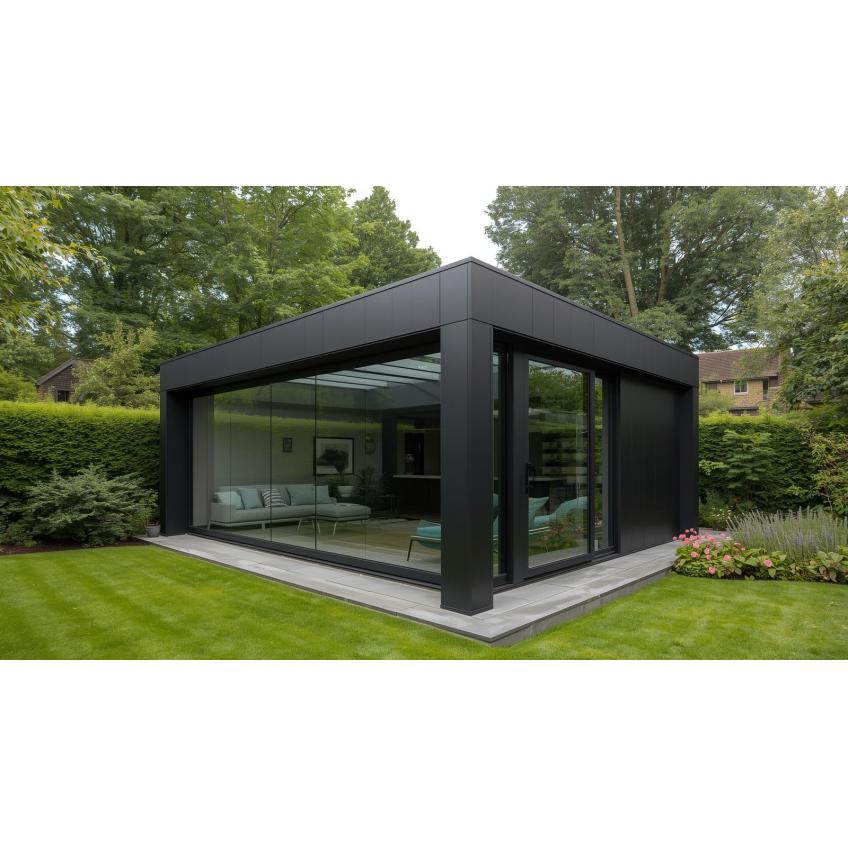
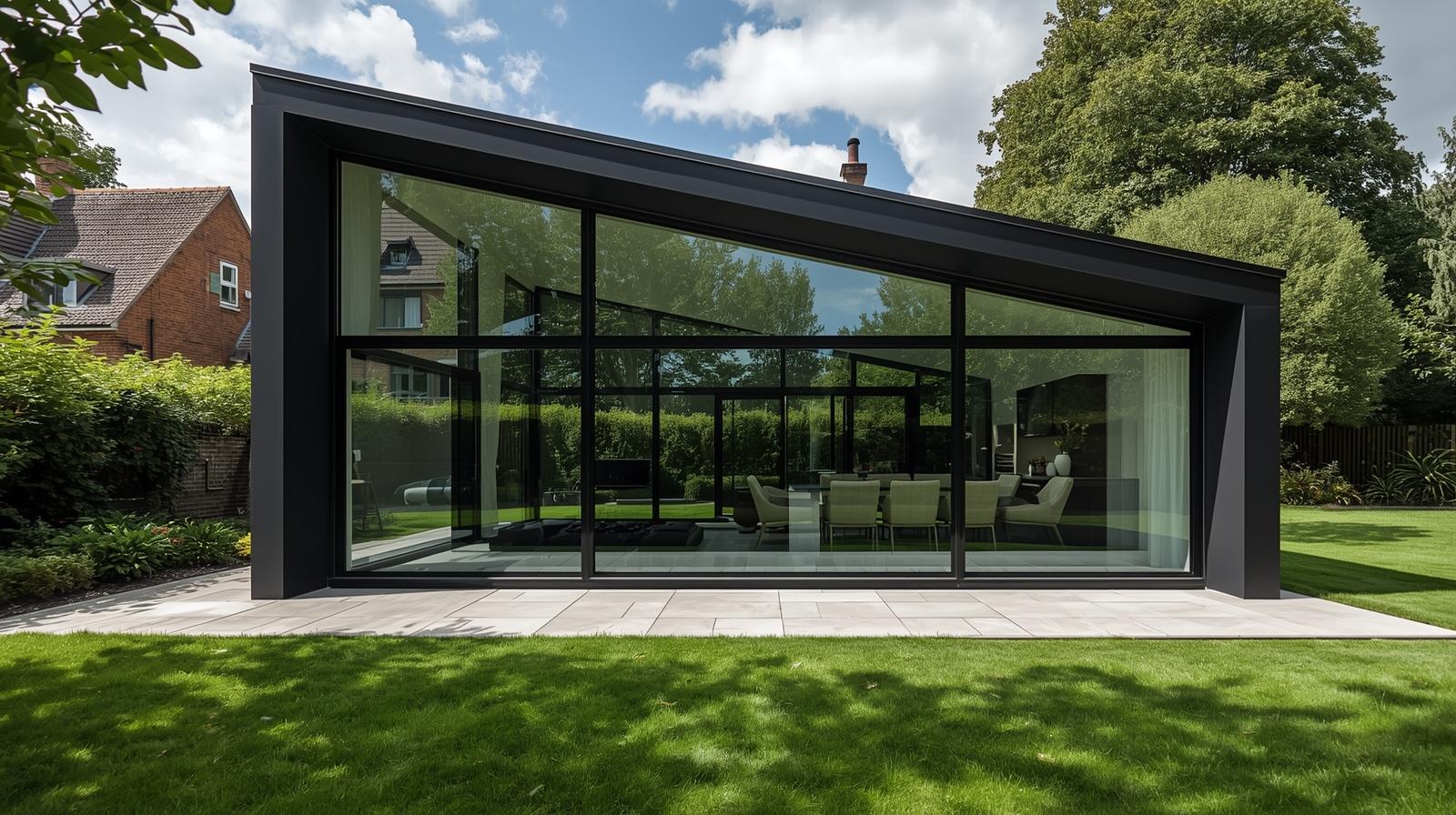
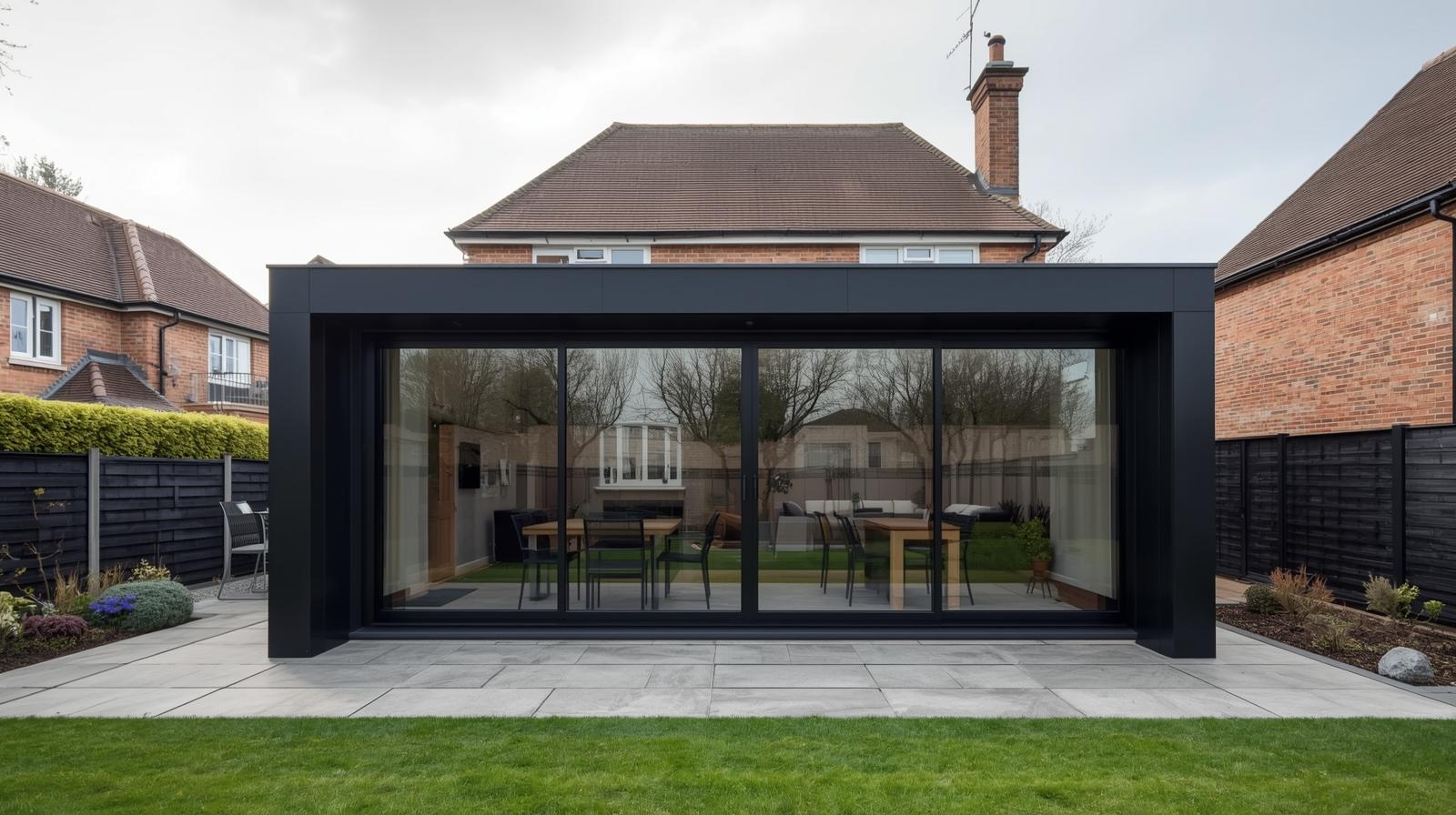
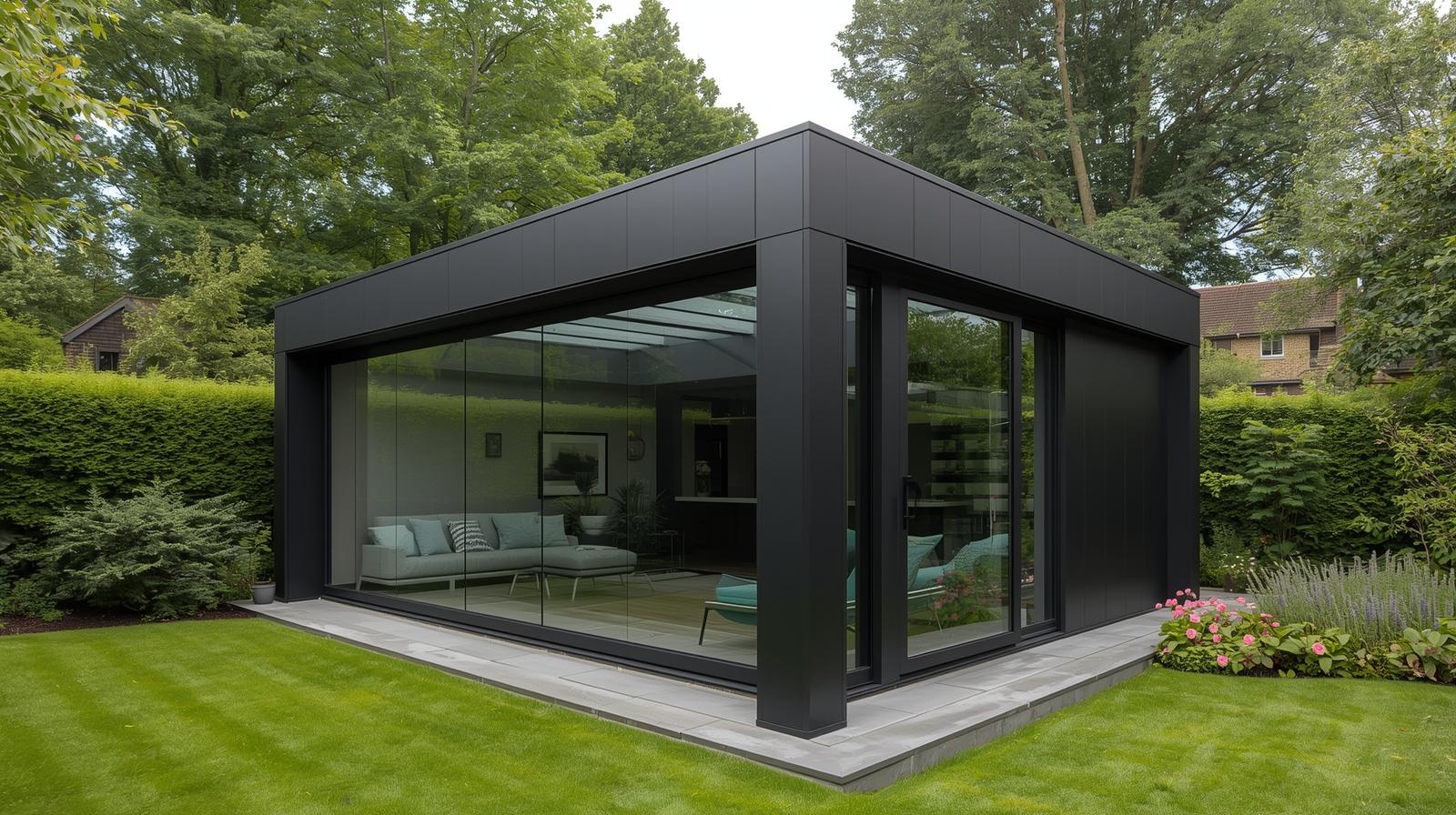
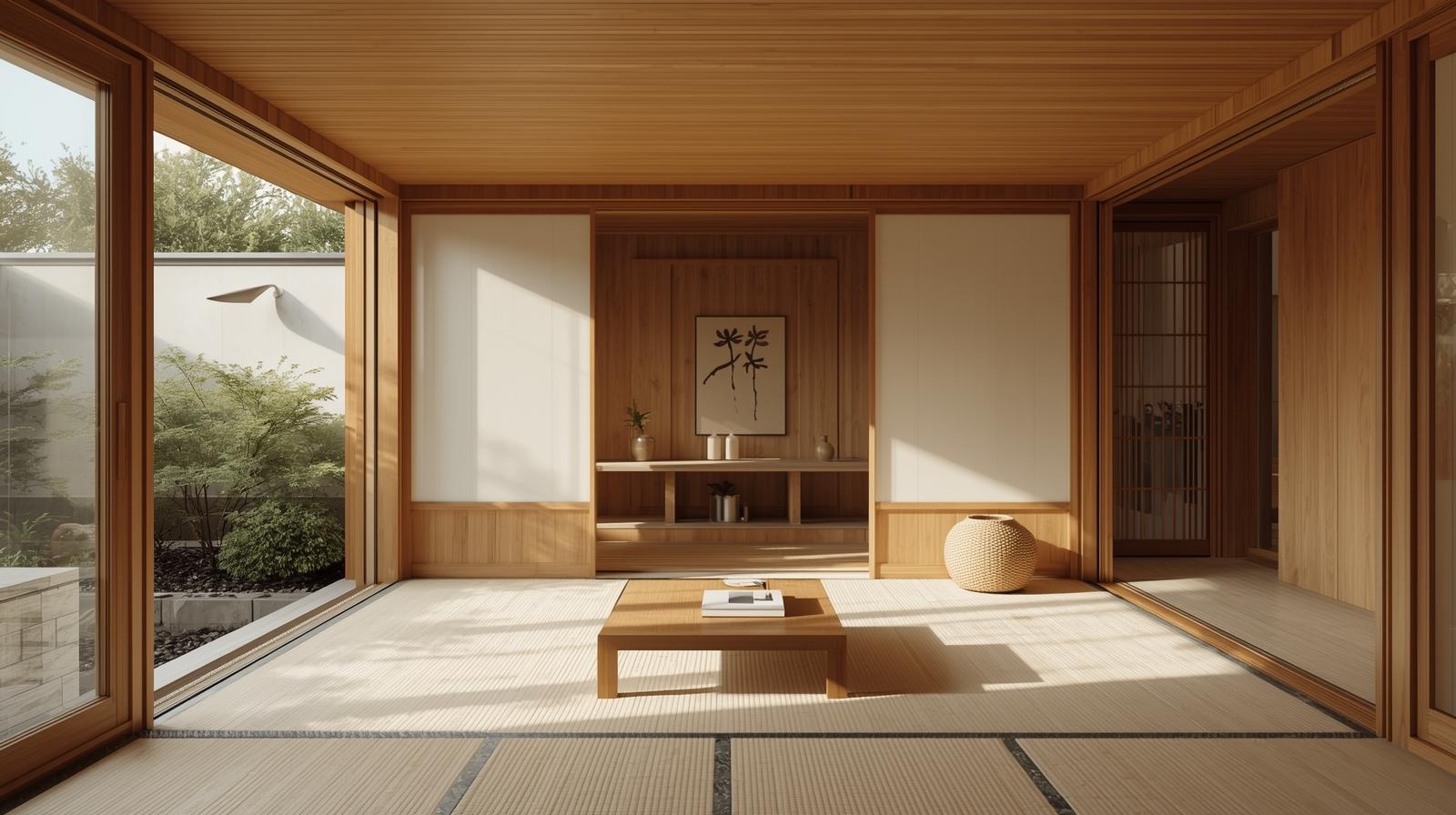
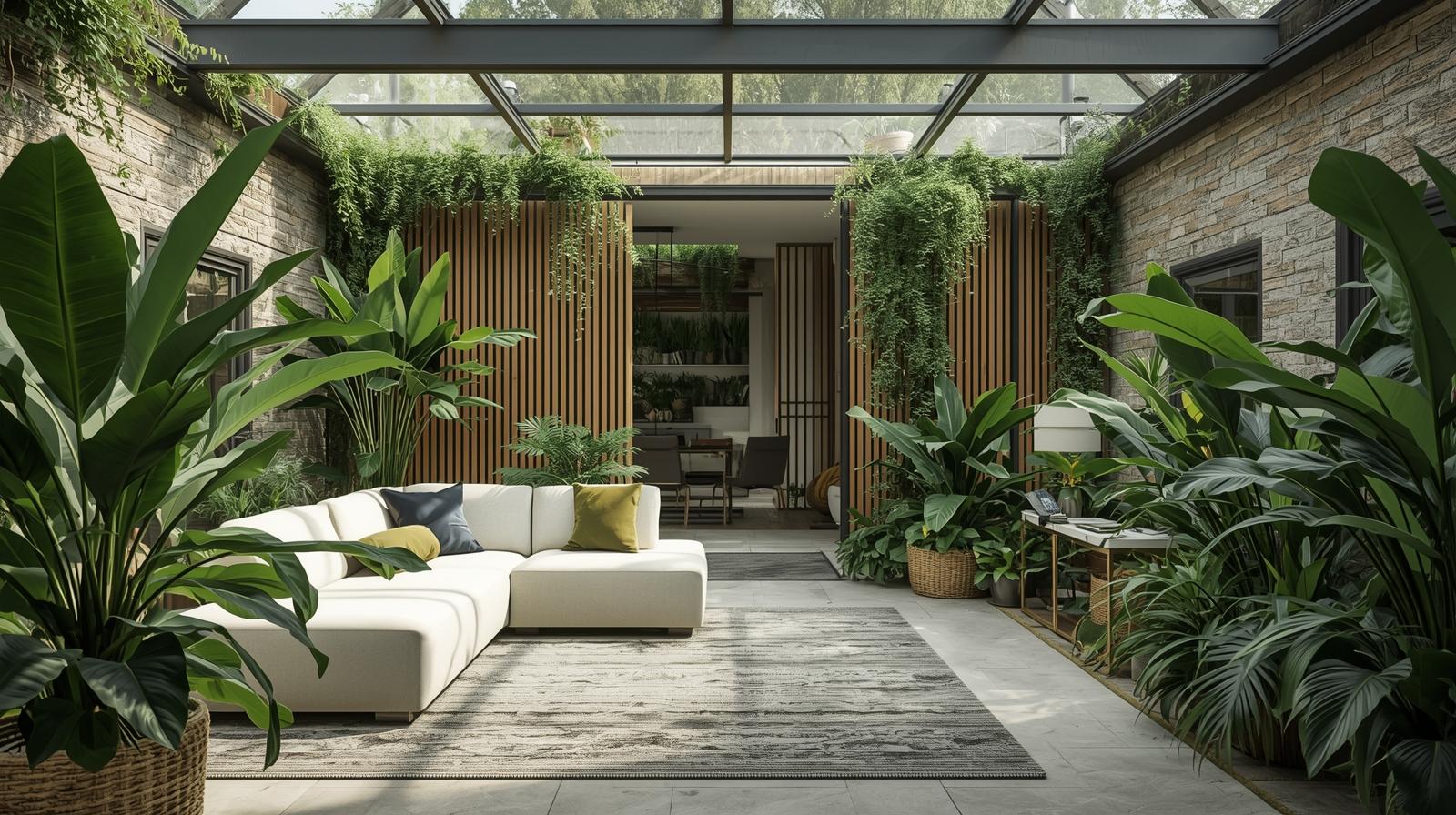

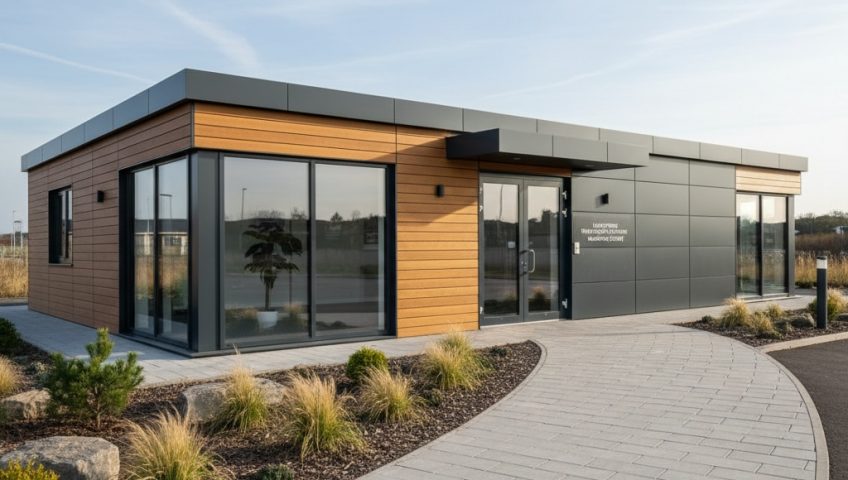


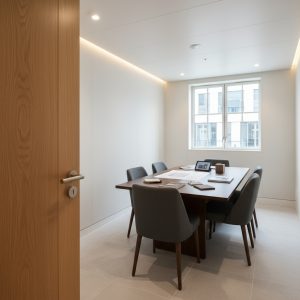
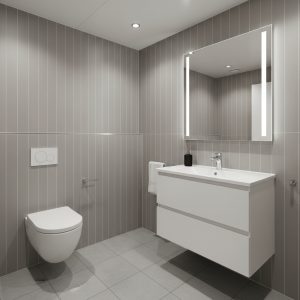
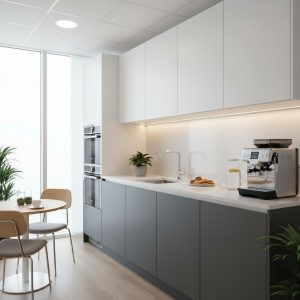

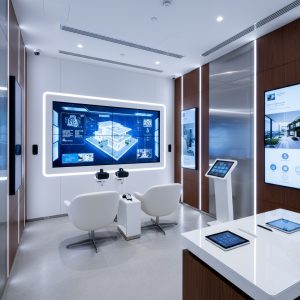

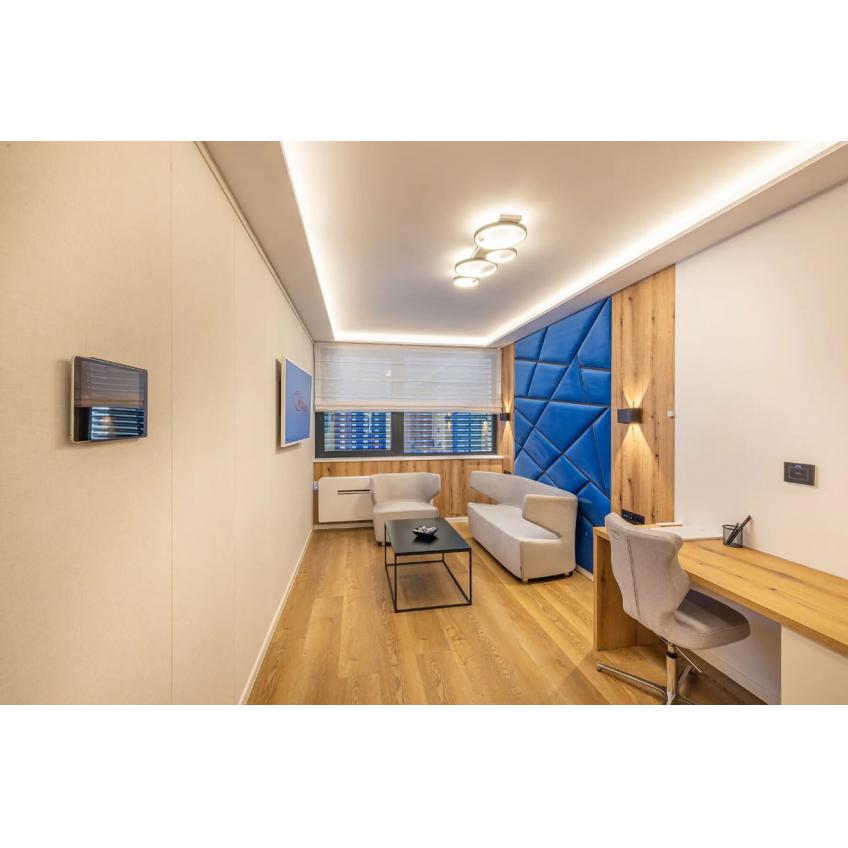

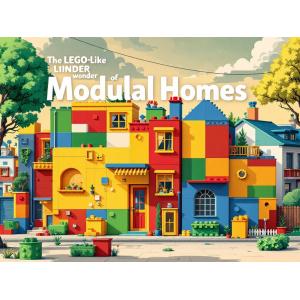



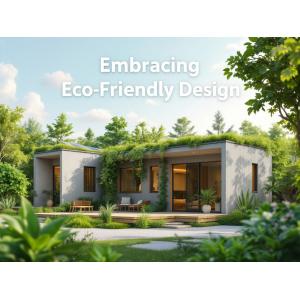
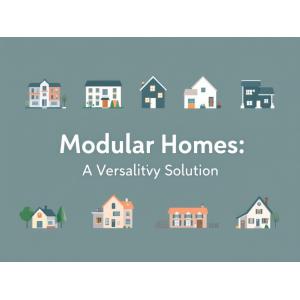



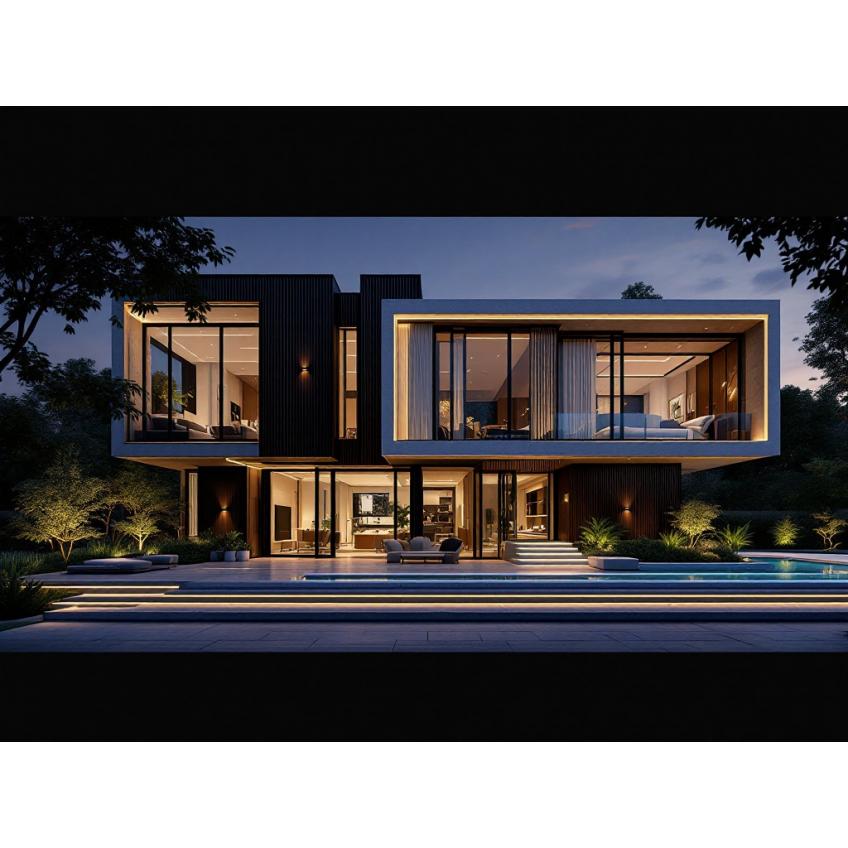





 Modular construction is poised to revolutionize the construction industry, offering numerous advantages that make it a compelling choice for the future. Here’s why:
Modular construction is poised to revolutionize the construction industry, offering numerous advantages that make it a compelling choice for the future. Here’s why: